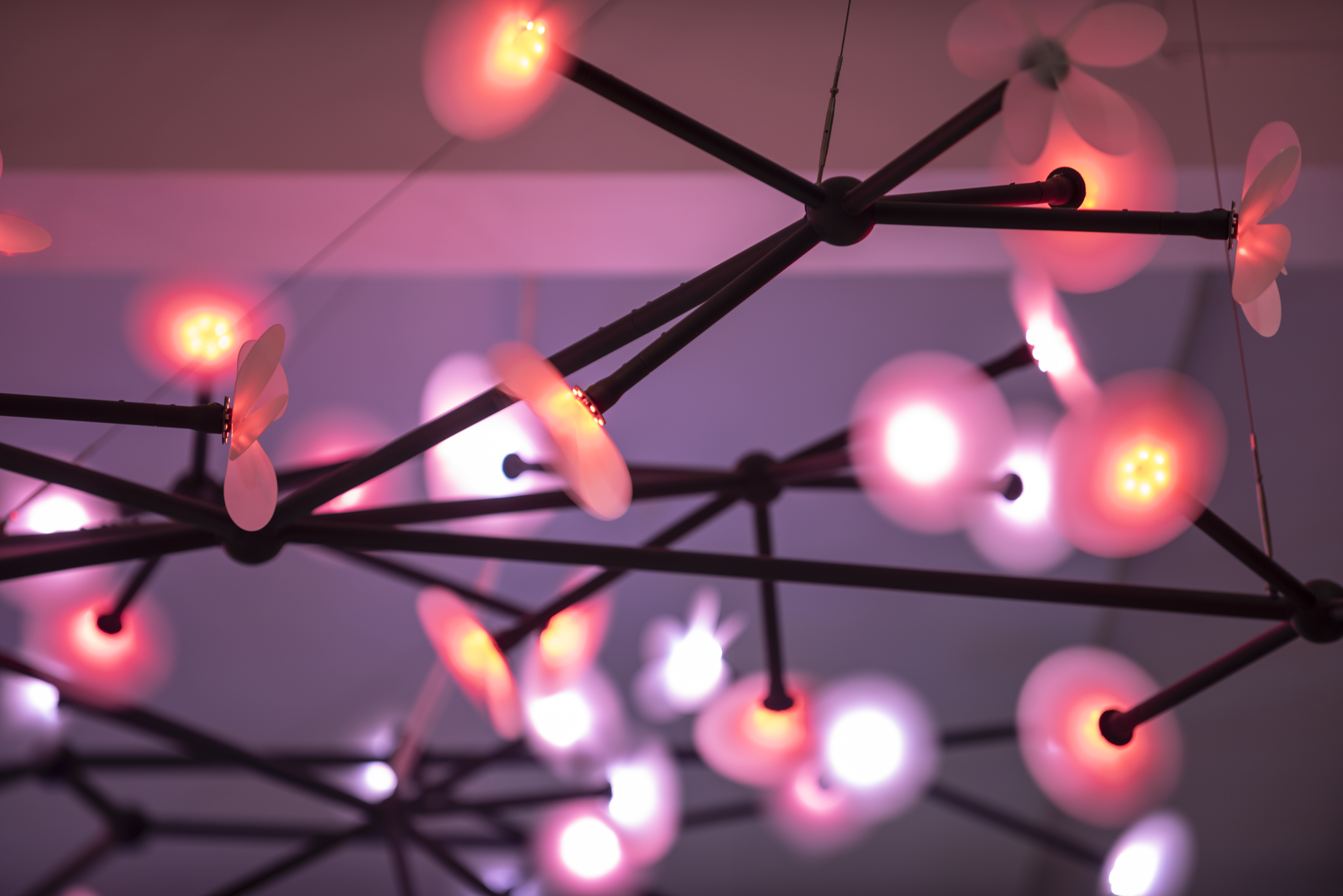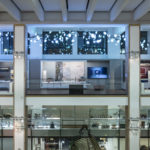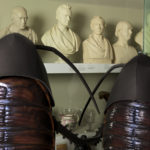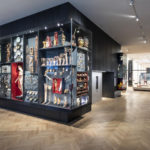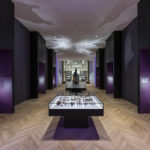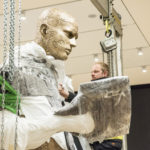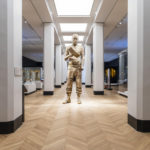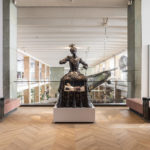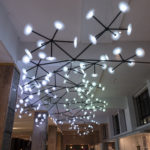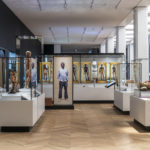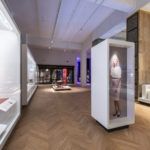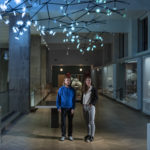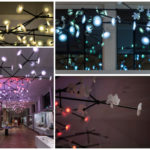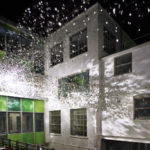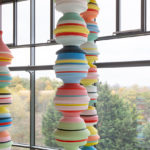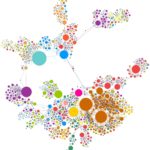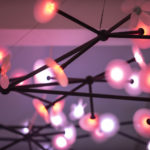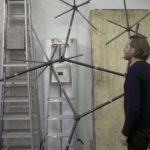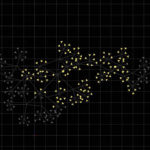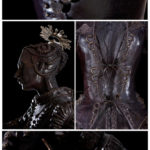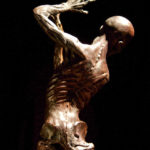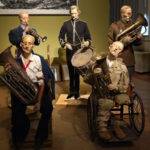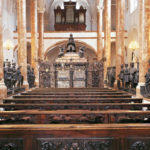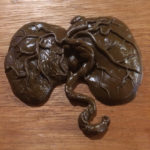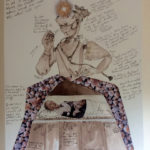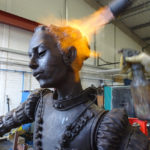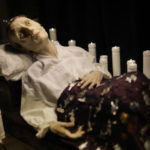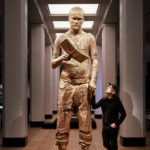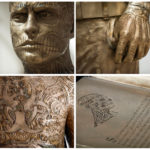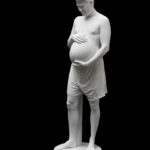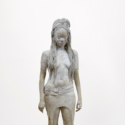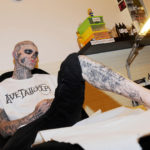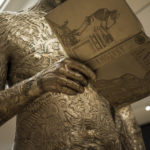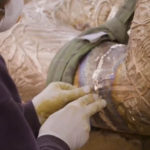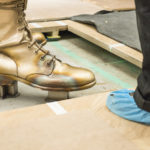Artist interviews – new art for Medicine: The Wellcome Galleries
Article DOI: https://dx.doi.org/10.15180/201404
Abstract
Opened in November 2019, Medicine: The Wellcome Galleries showcases four major new art commissions at the Science Museum, London. This article brings artistic and curatorial voices to reflect on their meaning, as Curator of Art Collections, Katy Barrett, talks with artists Eleanor Crook, Marc Quinn, and Sophie Nielsen and Rolf Knudsen of Studio Roso. They consider the process of producing the works, what they were inspired by and what is different about working in a medical or science context. This allows Barrett to reflect on all four commissions, how they fit into the history of art at the Science Museum, what they bring to the Museum’s collections, and what can be learnt from art in looking at and understanding science.
Keywords
art and science, art commissions, artist in conversation, Medicine galleries
Introduction
https://dx.doi.org/10.15180/201404/002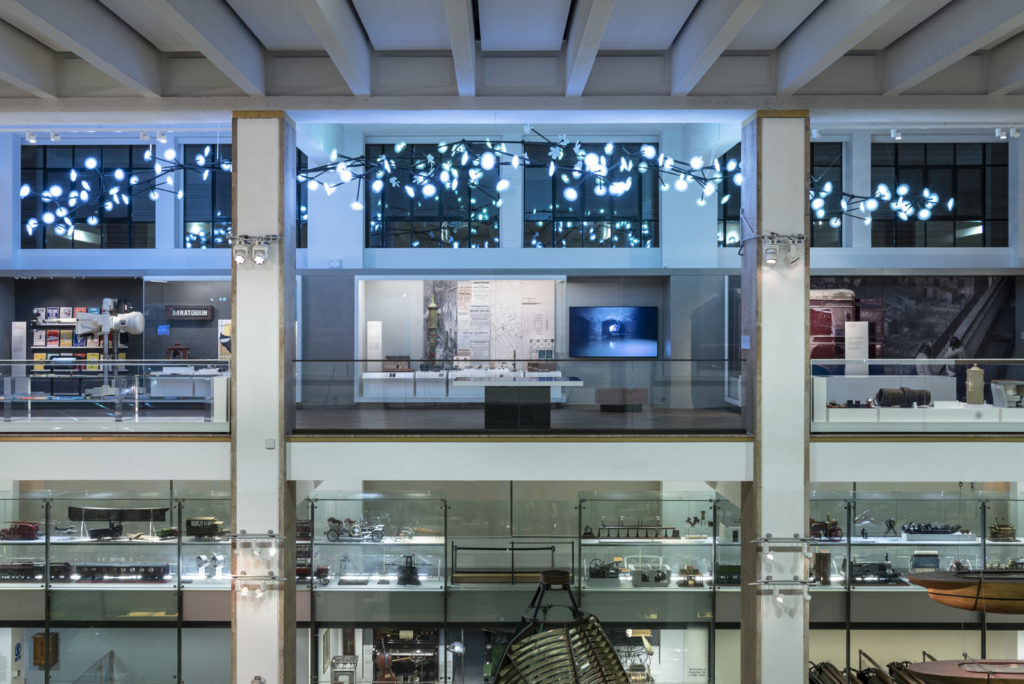
What can be learnt from the presence of artworks in a science museum, and what from their particular place in a medicine gallery? These are the questions at the core of working as Curator of Art Collections at the Science Museum and overseeing a series of major commissions for Medicine: The Wellcome Galleries, which opened in Autumn 2019.
Art has been part of science museums for decades, and part of the Science Museum since its inception, whether in the permanent collections or, more recently, as part of commissioning, display and events programmes. One argument for bringing artists into these spaces has long been the inclusion of new voices and new perspectives, ones that question the assumptions and values of science.[1] A principle of the medicine galleries was, likewise, the importance of putting varied experiences and voices at the heart of the displays.[2] This article therefore takes the approach of an ‘In conversation’ with three of the artists commissioned for the galleries – Eleanor Crook, Marc Quinn and Studio Roso – to put artistic and curatorial voices in dialogue, and to consider different ways in which these kinds of collaboratively produced artworks can answer the questions posed at the start.
Born out of the Great Exhibition of 1851, the Science Museum’s founding collections originally formed part of ‘the South Kensington Museum’, which opened in 1857. This was on the site of what is now the Victoria and Albert Museum and combined art and science collections. When the Science Museum was formally created as a separate institution in 1909, it was founded with collections that included artworks from a side project by the curator of the Patent Museum, Bennett Woodcroft: ‘A National Gallery of Portraits of Inventors, Discoverers and Introducers of the Useful Arts.’ Artworks continued to join the collection from that point, largely selected for their representational value, and housed within the relevant scientific or technological collections departments. With the formation of a designated ‘Pictorial Collection’ in the 1970s, for the first time the full wealth of the image collections could be seen and catalogued by curator Wendy Sheridan, who also made significant additions up to 2005.[3]
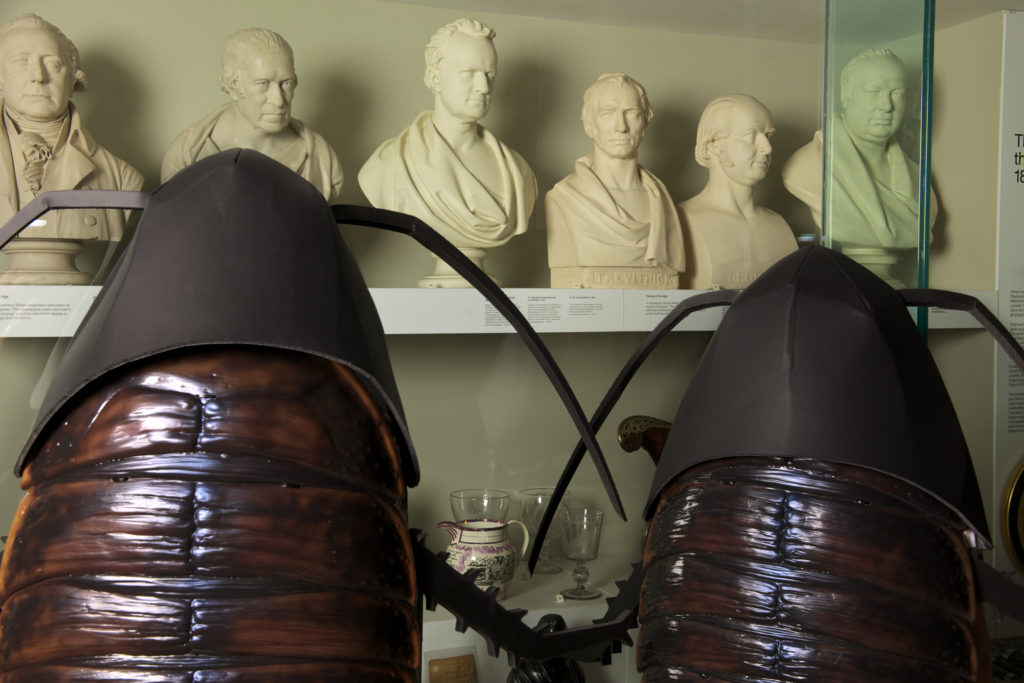
In the 1990s, the Museum developed a contemporary arts programme, and a policy (instigated in 1996) that it would ‘integrate art within the development process for all major capital projects, both buildings and galleries’ with the intention that this would enable the public to explore science and technology through art, create innovative environments, allow artists to engage with the Museum’s collections and expertise, and particularly promote the exploration of new digital media.[4] From 1999 to 2014, under the leadership of Hannah Redler Hawes, the Science Museum Arts Programme thus worked with contemporary artists to produce temporary and permanent gallery interventions, exhibitions, research, residencies and events. These focused on bringing artistic perspectives to bear on the impacts and social contexts of science, often raising moral or ethical questions. The works commissioned by SMAP for permanent galleries, including Energy (2005–2018) and Who am I? (from 2000, updated 2010) as well as a number of temporary displays, served to found a new, separate contemporary art collection for the Museum (Redler Hawes, 2019; 2016).
Arriving in 2017, as the third iteration of art curator at the Museum, my remit combined the collection with the commissioning programme. Alongside the development of Medicine: The Wellcome Galleries, we have sought to bring the Museum’s art collections and commissioning into closer conversation. Developed for permanent galleries with an intended lifespan of 25 years, these four new commissions will be part of the Museum’s approach to art for a generation. They are therefore as important in what they bring to the permanent record of art and science in dialogue within the collection – to the understanding of those disciplines’ histories, iconographies and structures – as they are to the narratives and visual experiences of their specific galleries. In the interviews below, each artist has reflected on what is special to them about creating work for a medicine gallery and a science museum. In working with them on the commissions, and in asking these questions, as the curator I sought to understand and articulate how these works can make viewers look at and think differently about histories of medicine, but also histories of art. Each work speaks to its gallery, to the Museum’s broader art collections and, crucially, to broader considerations of representation and iconography in how art and medicine engage with each other.[5]
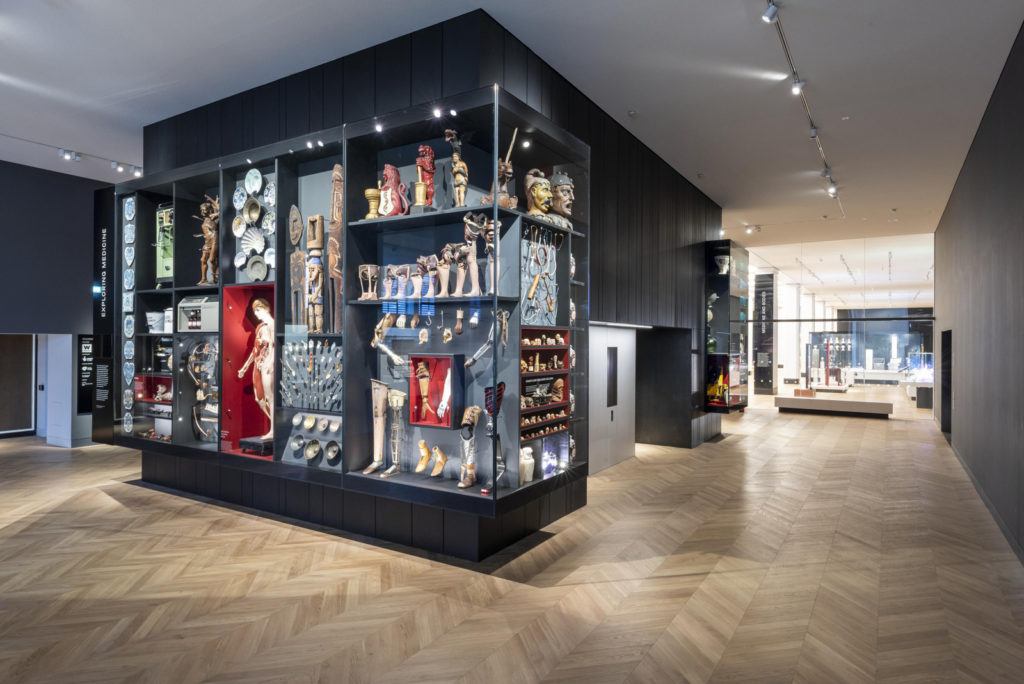
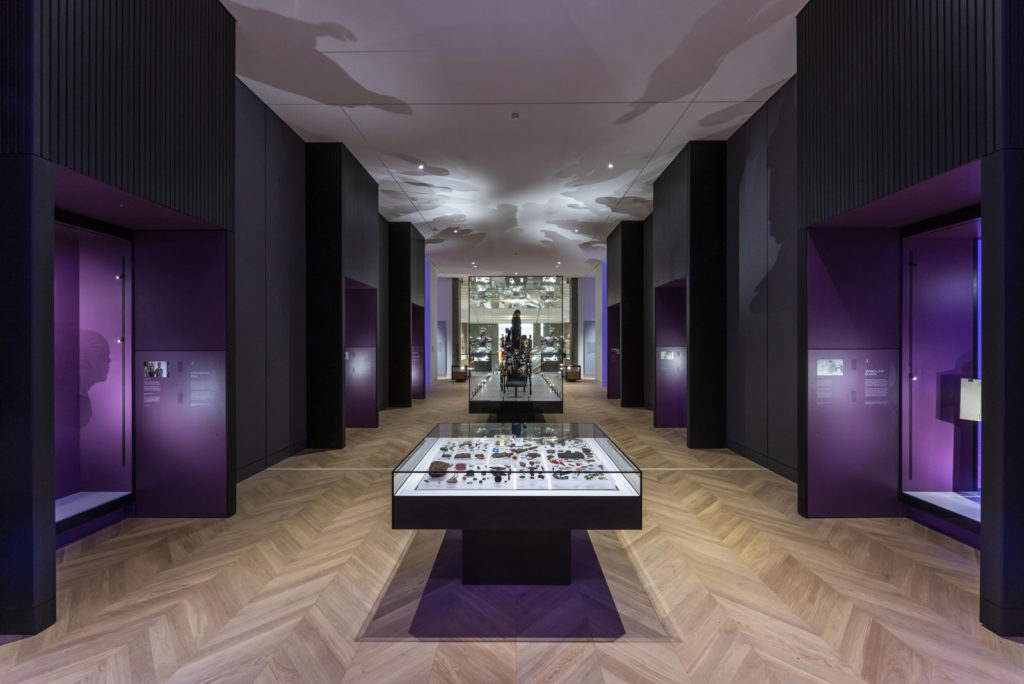
Medicine: The Wellcome Galleries was a ten-year project, within which the Science Museum actively worked with the artists for three years, and I joined as curator for the last two. Commissions are by their very nature collaborative projects, in which I see my role as curator being the conduit and translator between the artist and Museum teams, making the collaboration smooth and fruitful, whether over practical constraints or conceptual relationship to the wider gallery. As with most commissions, these started with a brief, developed by the Museum team in parallel with the gallery designs and curatorial strategy. In February/March 2017, the Museum team had approached artists for each commission based on aspirations for what the artworks would respond and speak to in each gallery. In each case the brief explained the space that an artist was asked to fill – both physically and conceptually – giving the physical, budgetary and logistical parameters, providing details of the anticipated audience, gallery designs and surrounding collection displays, and outlining the area of gallery narrative with which the artist was asked to engage. If interested, artists were asked to submit a concept for their proposed artwork, and the team appointed an artist for each brief based on these ideas.
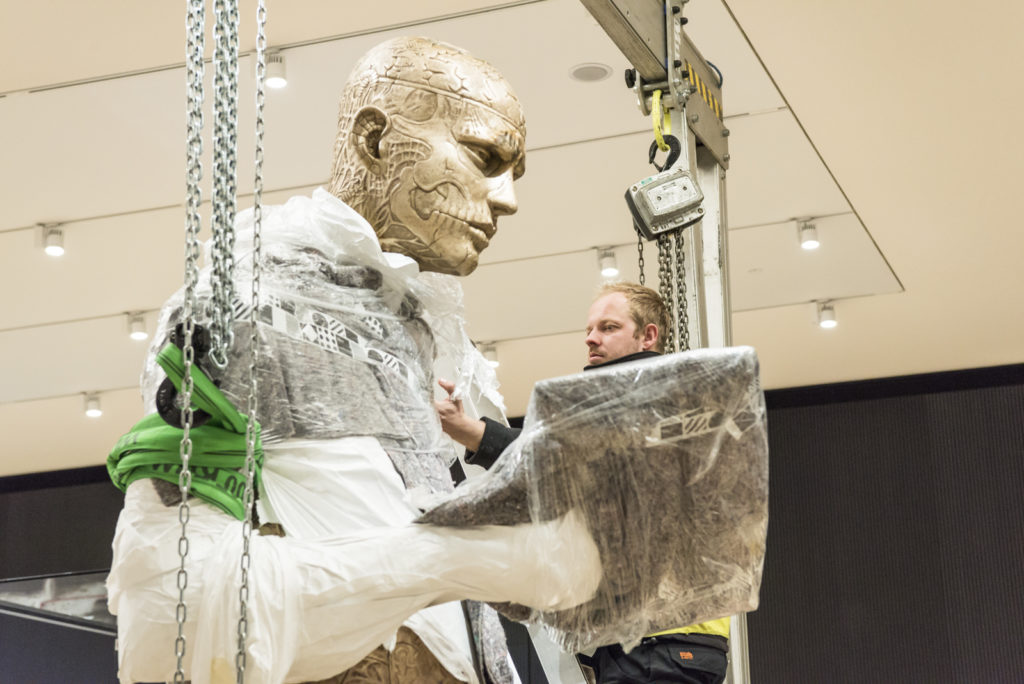
From the Autumn of 2017 each artist then worked up a developed proposal for their piece with feedback from the Museum team on its connections to the wider gallery. Together we began to think through the narrative of each piece and how these would speak to the stories of medicine and art in their respective galleries, from anatomical illustration to votive offerings. In 2018 a technical design with exact weights, dimensions, materials and technical specifications brought in the next layer of collaboration as relevant Museum teams commented and planned for the artworks’ future lives in a permanent gallery, considering electrics, maintenance, climate conditions and floor strengthening. As the galleries neared completion in 2019, we worked with each artist and their teams to develop the interpretation labels, here again balancing the artist and curatorial voice. We collaborated to document each piece fully for future staff, visitors and researchers, part of wider work to develop the layers of information that sit around an artwork, as both commission and collection object.
Despite representing only a few of the 3,000 objects on display in Medicine: The Wellcome Galleries, the visitors’ first encounter with the four art commissions is undoubtedly as major visual interventions.[6] Each artwork acts as a focal point, central to four out of the five galleries, experienced almost immediately on whichever route the visitor takes to enter the suite of spaces. While walking through the ground floor of the Museum, Studio Roso’s vibrant ‘Bloom’ can be seen when looking up at the balcony galleries, spread across the ceiling of Medicine and Communities, glowing with movement to evoke the spread of epidemic disease (see Collections Online). When entering from the front of the Museum, Marc Quinn’s monumental ‘Self-Conscious Gene’ introduces viewers to the Medicine and Bodies gallery with a tattooed sculptural figure (see Collections Online). Visitors arriving from the back of the Museum, into the darker, contemplative space of the Faith, Hope and Fear gallery, find ‘Santa Medicina’ by Eleanor Crook, providing a space to think about what makes ‘a good death’ and who or what individuals turn to in their moments of need (see Collections Online). Anyone joining from the large central lifts and heading right into Medicine and Treatments will discover that the gallery is peopled by the photographer Siân Davey’s life-size portraits of patients and practitioners, presented in two different photographs.[7]

The visual power of these pieces certainly draws the visitor in, but each also further works to connect narratives of art and medicine within and across the galleries. Each commission is tied into both the collections and stories of its gallery, and broader histories and dialogues of art, science and medicine in the collections. Marc Quinn’s ‘Self-Conscious Gene’ represents Rick Genest, an actor, model and muse, who is perhaps best known for his appearance in Lady Gaga’s music video ‘Born this Way’. Genest’s full-body tattoos mix anatomical imagery and popular tattoo iconography, such as spiders’ webs, gravestones, insects and knuckle lettering.[8] In choosing these, Genest made of himself both a decaying corpse and the kind of figure known as an écorché, where the skin is removed to show the musculature.[9] This imagery connects to the study of both art history and medicine, both the careful observation of anatomy to understand the living and the use of memento mori that remind us of the inevitability of death. Quinn speaks below about how, for him, this was important to connect the contemporary world and pop culture into the Museum, allowing visitors to relate their modern bodies to the historic ones on show. For me, it also connects the visual cultures of tattooing to those of anatomy.[10] The book that Genest holds is an anatomical dictionary on the pages of which Quinn has reproduced two famous images from Vesalius’s seminal work published in 1543, De Humani Corporis Fabrica (On the Fabric of the Human Body), which offered the first comprehensive visual account of human anatomy. A copy is displayed nearby in the Medicine and Bodies gallery.
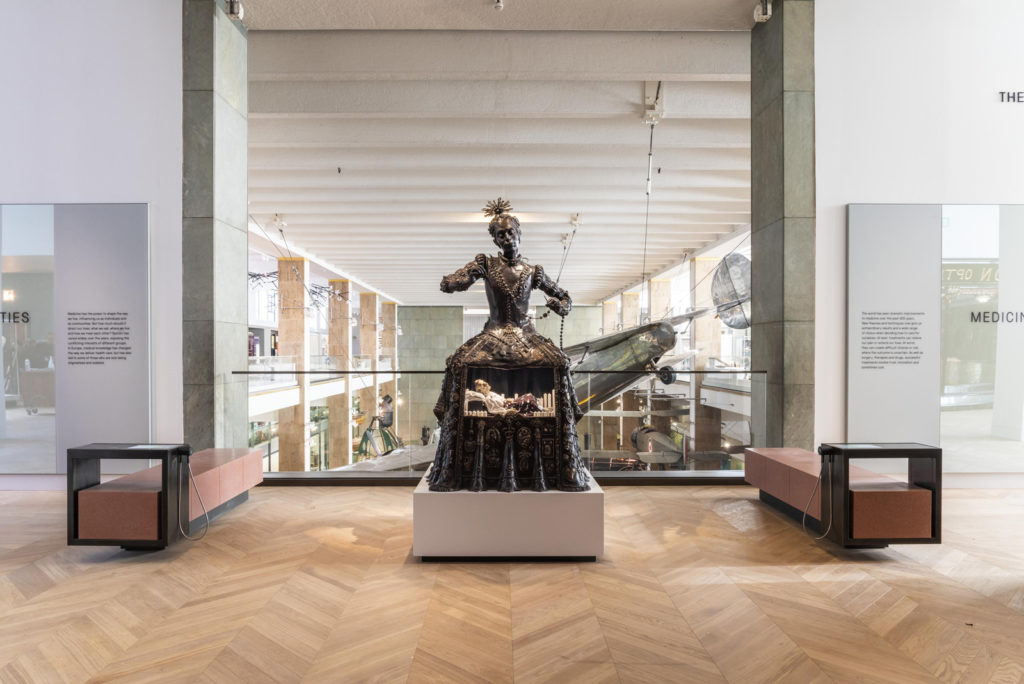
Eleanor Crook also has a deep interest in histories of collections and imagery.[11] Her bronze figure ‘Santa Medicina’ is both surgeon and saint, offering an imagined patron saint of medicine that combines faith with treatment. Crook weaves iconographies from medicine and religion together: the stethoscope becomes a rosary, the surgeon’s mirror a monstrance, the dress opens down the back like medical scrubs to reveal écorché muscle. The bell-shaped skirt is covered in amulets, connecting to rich displays of amulets and votives elsewhere in the Faith, Hope and Fear gallery. Many people involved in the wider medicine galleries project suggested an amulet from their own medical experience, and I am confident that my teenage self would be particularly delighted that years of much-hated orthodontic treatment are represented in a retainer brace that Crook has somehow made beautiful. The wax figure sheltered in the skirts of ‘Santa Medicina’ seeks to raise deep questions and engender a range of emotions, responding to the commission brief that this piece should encourage visitors to think about their own mortality. As Crook explains, this is a material and visual homage to her first understanding of death at a young age when faced with a monumental tomb. Her figure responds to the rich religious iconography from across the world that can be found in Wellcome’s medical collections at the Science Museum, as well as showing how important shared histories of materials like wax and bronze are across artistic and medical practice.
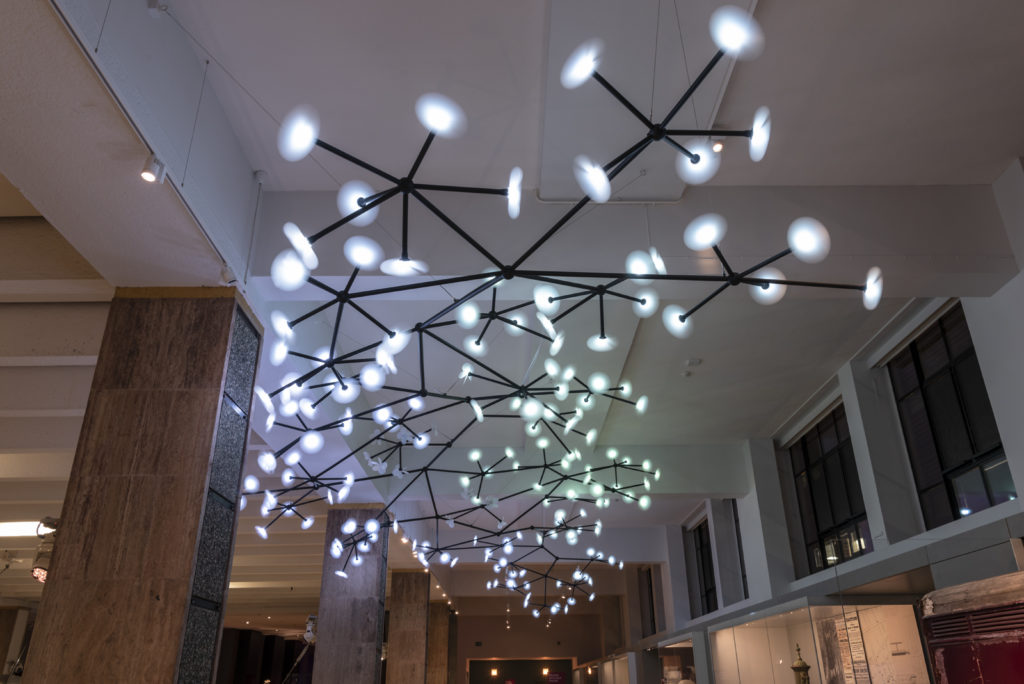
Studio Roso’s installation ‘Bloom’ is simultaneously mesmerising and slightly unnerving, evoking both the subtle joy of opening blossom and the creeping spread of a rash or fungus. This vast kinetic sculpture helps to give viewers a sense of the scale at which health and medicine operate at a group rather than an individual level. ‘Bloom’ recalls a large diagram in a textbook or scientific paper, where each branching structure ends in a series of propellers. These spin, light up and change colour in a number of different imagined ‘narratives’ that evoke how disease spreads. As Knudsen and Nielsen discuss, this was a design and engineering challenge to produce the piece on such a vast scale, including creating a VR simulation to see the subtle movements of light and material that are central to much of their work.[12] As a digital and kinetic artwork, ‘Bloom’ continues the development of digital works commissioned and collected by the Science Museum Arts Programme. Through its non-figurative form, the work likewise emphasises the importance of histories of diagram and of how scientific ideas have been visualised for the public. This kind of branching tree structure has been used in many visual ways to classify and categorise knowledge, most famously in Darwin’s work that led to On the Origin of Species by Means of Natural Selection (1859).[13]

Unfortunately, Siân Davey was unable to take part in this ‘In conversation’, yet dialogue was core to the photographs that she produced for the galleries, which were part of a broader participation project. Her compelling life-size portraits stand throughout the Medicine and Bodies displays and extend like a visual spine down the Medicine and Treatments gallery. Davey worked as a psychotherapist for many years before turning to photography. Her work regularly engages with different mental landscapes and with sitters that might be seen as outside of the so-called ‘norms’ of medicine or society. From receiving our brief in March 2018, Davey worked with the Science Museum’s participation group ‘When medicine defines what’s normal’ to produce a series of portraits for Medicine and Bodies. She developed portraits of a range of sitters living with different medical conditions, which are presented both physically in the space and digitally on kiosks. The participation group shaped the choice of sitters as well as Davey’s compositions, including her choice of pose and background colours. For Medicine and Treatments, Davey photographed a number of individuals already working with the Museum around their experience of receiving or giving medical treatment. Capturing their personalities and building on her discussions with the participation group, each sitter appears twice in the physical portraits, with differences of pose and expression to help build a more complete picture of each individual’s character.
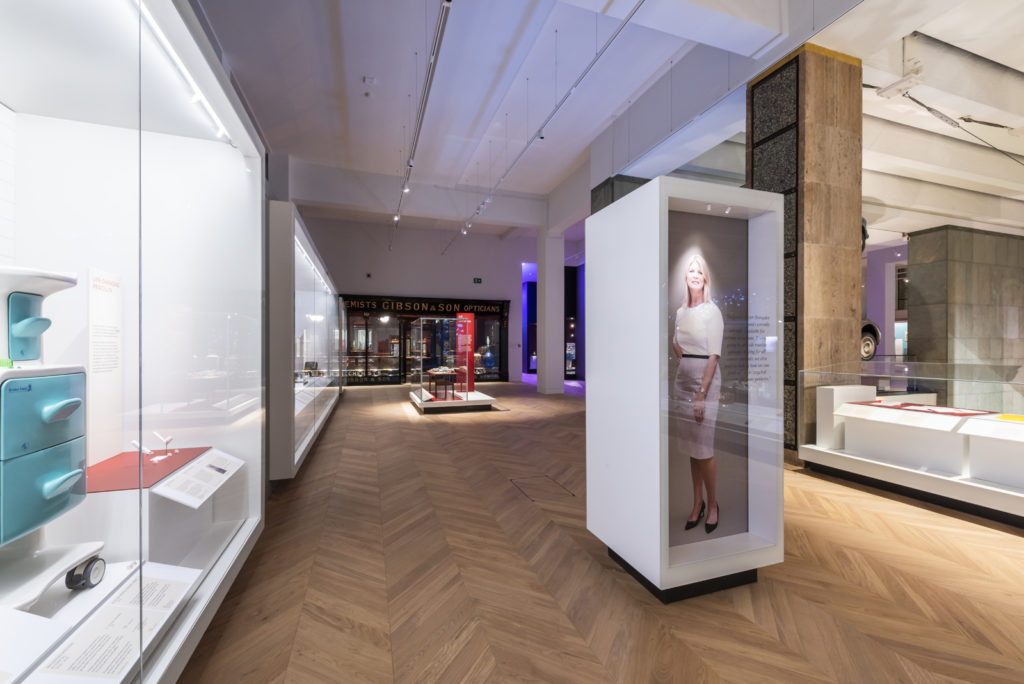
The Science Museum’s curatorial team helped to facilitate Davey’s portrait shoots in a studio in south-east London in the summer of 2018, making collaboration even more key to this commission. We learnt practical lessons around finding and preparing the right studio space, we brokered the relationships that then developed visibly in the shoot built on Davey’s empathetic approach, we observed the careful way that each sitter was given time and space, offered make-up and styling to be their preferred version of themselves. Davey joined the Museum in March 2019 for the conference ‘Representing the Medical Body’ at which she spoke compellingly about how we love and care for things that are different to us.[14] Her turn to photography comes originally from using the camera to understand her relationship with her daughter Alice, who was born with Downs Syndrome (Davey, 2015). Davey brought many conference participants to tears with her thoughtful and deeply personal commentary on human vulnerability to feelings of shame, anger, grief and pride and how one person’s diagnosis or lived experience is only a small part of society’s relationship to difference. For the Museum, not only do Davey’s photographs make people fundamentally present in the galleries, at life size, but they also help visitors and staff to think about who is represented in the Museum’s collections and how we challenge who has historically been thought worthy of a portrait. In 2020, this has only become more important.
When developing ‘Bloom’ with Studio Roso, we could never have imagined the ways in which its meaning and relevance would shift as the Covid-19 pandemic struck. No longer do visitors need reminding of how epidemic disease might spread, or a way to visualise it, rather perhaps this mesmerising piece has shifted to create a space of reflection on the power that illness holds in our lives. Indeed, all of the artists reflect below on how these artworks feel to them now, one year on and in a very different world. Reflecting as curator, I come back to a conviction that art in science museums can play a fundamental role in showing how science is cultural, and the importance of visual histories in that story. These commissions each bring different histories of art and medicine into the galleries, strengthening the dialogue between the visual cultures of both.
In conversations
https://dx.doi.org/10.15180/201404/003As part of the aim to put varied experiences and voices at the heart of the medicine galleries, the artists share quotations on the object labels with their thoughts on their commissioned works. It seemed equally important to bring their voices into this Journal special issue through the ‘In conversation’ format, balancing and challenging the curatorial voice of the introduction. In order to keep the artists’ voices to the fore, and to create parity across the three conversations, I asked all artists the same short questions, seeking to draw out their reflections on the inspiration, process and product of their commission with minimal curatorial direction. These were questions to which I, equally, wanted to know the answers. Due to the constraints of the pandemic, the conversations could not take place within the galleries or artists’ studios as I had hoped. Instead, they were done remotely using the artists’ preferred method, either by video call, with the transcript jointly edited down, or by email, with responses then tweaked and balanced once all three could be read together. Images were, equally, selected jointly, forming a visual dialogue across the article, and serving to articulate the interdisciplinary narratives of art and medicine that the commissions make visible in the galleries.
Studio Roso (founded 2008)
https://dx.doi.org/10.15180/201404/004Studio Roso is a partnership between Danish artists Sophie Nielsen and Rolf Knudsen, combining architecture and design. They regularly work in response to commissions, whether for public institutions, commercial spaces or private collectors, and always focus on site-specificity. Their pieces emphasise the beauty of materials and the ephemerality of nature, often working with light and movement, and often installed suspended in space. Their works force the viewer to look at sculpture in space, very much aware of its context and its impact on the surrounding environment. While Studio Roso have worked in medical spaces, such as the Royal National Orthopaedic Hospital, this is the first commission on which they have responded to medical content.
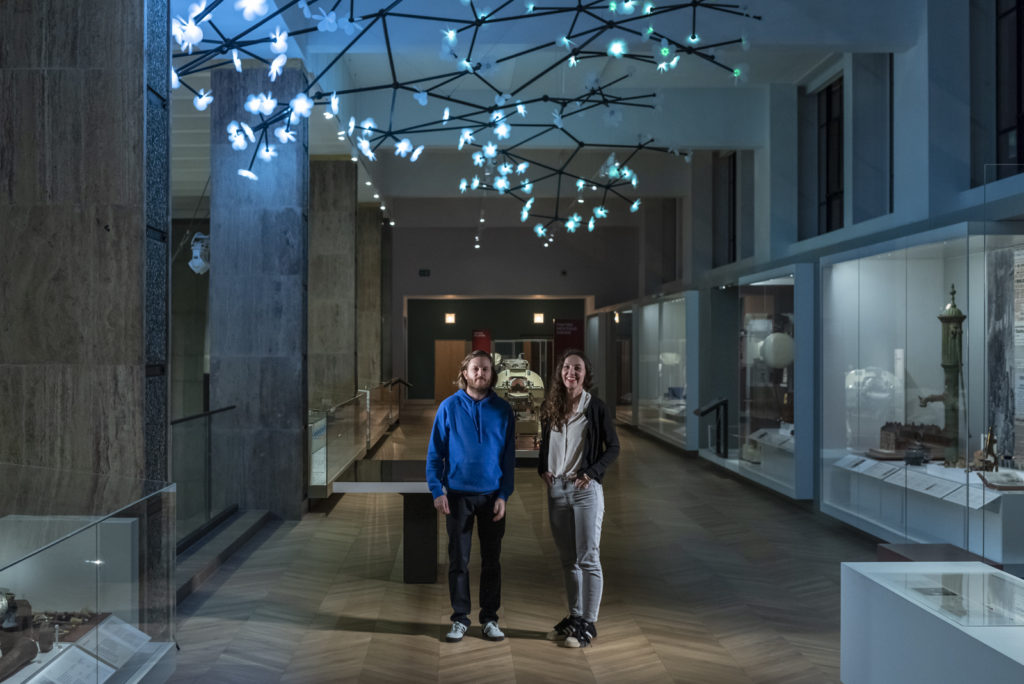

Katy Barrett: Tell us about your work and background.
Studio Roso: We [Rolf and Sophie] met while studying architecture in Copenhagen. We then both went off to study Industrial Design in different countries and finally crossed paths once more while studying at The Royal College of Art in London, where we set up a studio together. We now use these different areas of interest in our work, where we fuse architecture, art and design to create bespoke, site-specific installations.
In our work we strive to create an emotional response between the viewer and the artwork. We are not wedded to a specific material or craft, but to the idea and the emotional outcome of this, where materiality and aesthetics are design drivers to obtain an overall concept and its successful implementation in a given scenario. We always strive to recreate the experience of the ‘extraordinary’ and are often influenced by the ephemeral, the fleeting, by nature and craftsmanship.
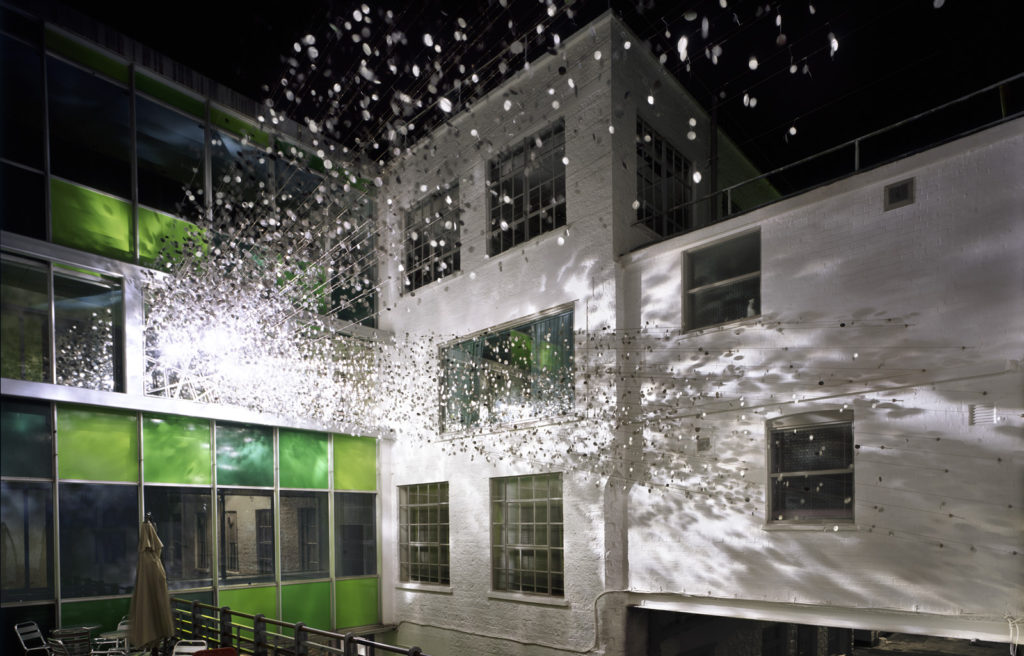
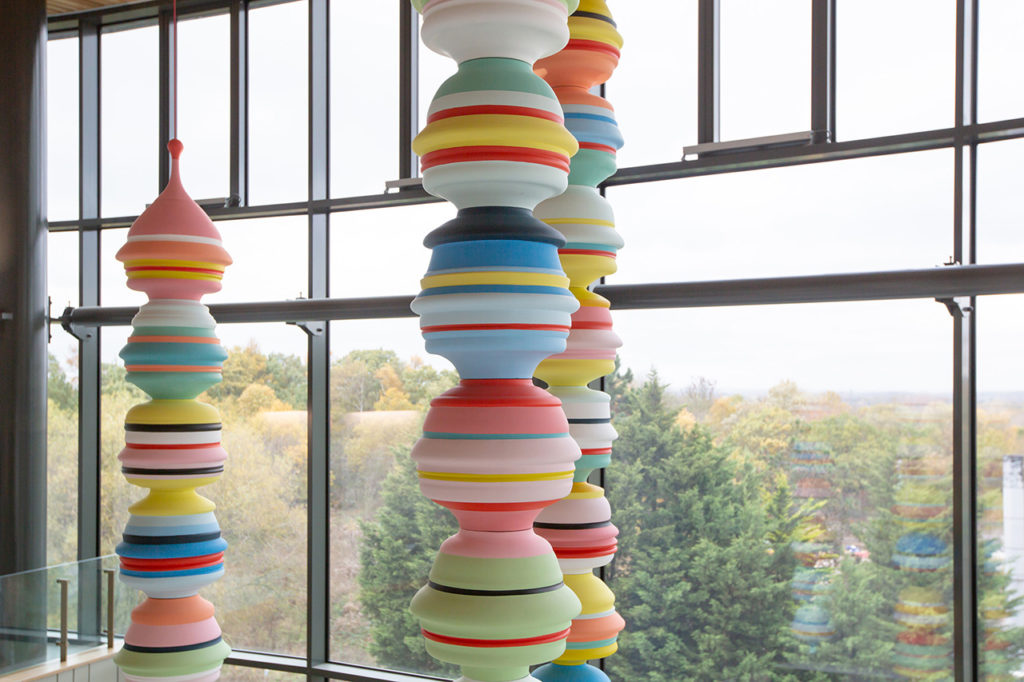
KB: What appealed to you about this Science Museum art commission?
SR: Being invited to create work for a whole new gallery in an institution like the Science Museum was a challenge that we were excited to take on. We were intrigued to work within the context of medicine as a subject matter and to try and break down complex ideas and facts into an artwork that would be seen, deciphered, picked apart and enjoyed by a very diverse audience of children and adults alike.
KB: Do you think it is a particular challenge to work with this medical context? Is that different to working with a scientific context more broadly?
SR: We have created work for medical settings like hospitals in the past, but in those instances it has been a case of making art that would offer opportunities to aid better health, wellbeing and improved experiences for patients, service users and staff. With these pieces we would try to create a distraction from the medical context.
So, to work with and convey this context was great. Maybe the biggest challenge was to turn complicated facts and content into tangible art.
The way we approach big subjects, medical, scientific or political, is often to try and create a story or an analogy that we can use to turn something otherwise intangible into a physical object or representation. In this particular case working with ideas and content that a lot of people do not want to be confronted with and turn it into an artwork that would not make our audience uncomfortable, but instead spark their curiosity and ultimately be understood across a wide audience, without previous knowledge of the science of epidemics.
KB: What informed your proposal for the commission?
SR: We immediately dove into reading and studying the various epidemics/pandemics and illness that have swept through the world and societies over the course of history. Being visual people, we were intrigued by the diagrams and maps of disease transmission networks and epidemiological diagrams that experts use to predict the paths that epidemics will follow across the globe, so they can cut them off before they get out of control. These networks are an important part of epidemiological studies and are also visually very beautiful. We decided to use these as a driver for our proposal.
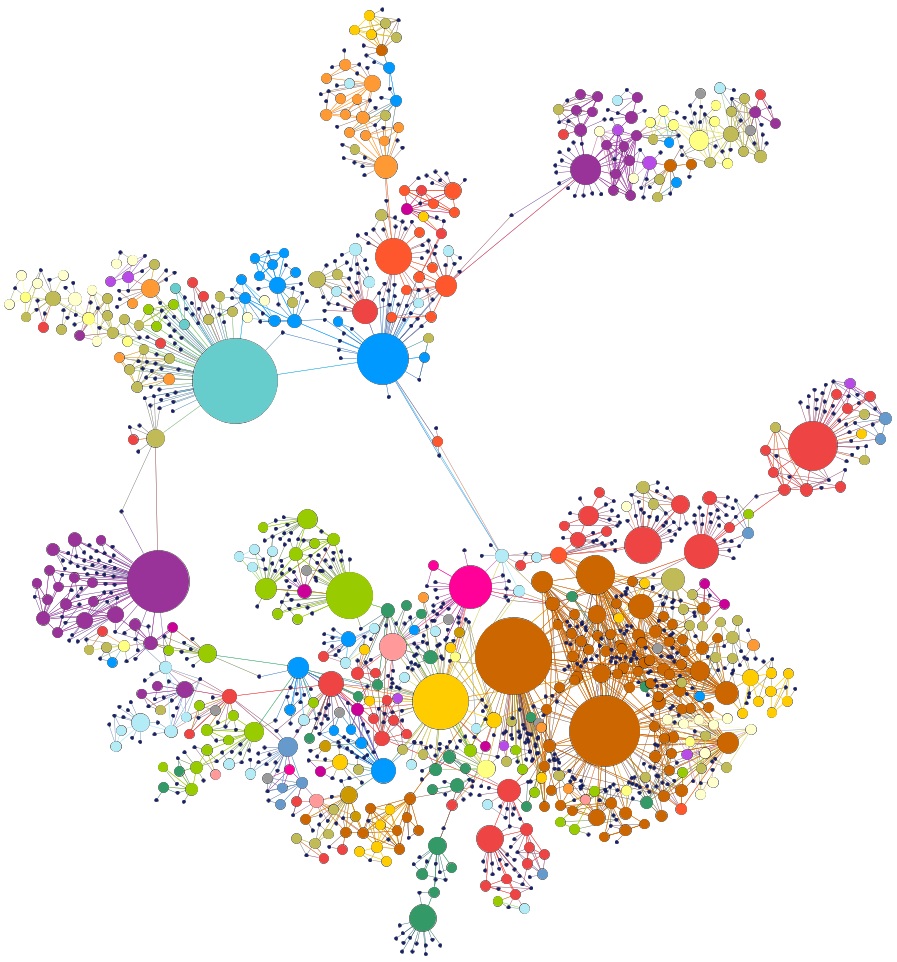
We chose to base our proposal on the notion of air being the carrier and the ‘active’ part in an epidemic system – an airborne virus. The act of sneezing produces a burst of air and saliva, which will transmit a virus from the ‘sneezer’ through the air to other people, a common way for viruses and epidemics to spread. As such, we created a three-dimensional diagram showing ‘air’, represented by propellers turning, as the carrier and active part in an epidemic system. Each propeller is a ‘sneeze’, an expulsion of air, setting off propeller after propeller.
We also made the propellers light up when a virus spreads throughout the diagram. When a virus is present in the body on a microscopic level it is the most colourful and embellished of microbes. As a result, the whole structure of ‘Bloom’ becomes more and more colourful when a virus is present.
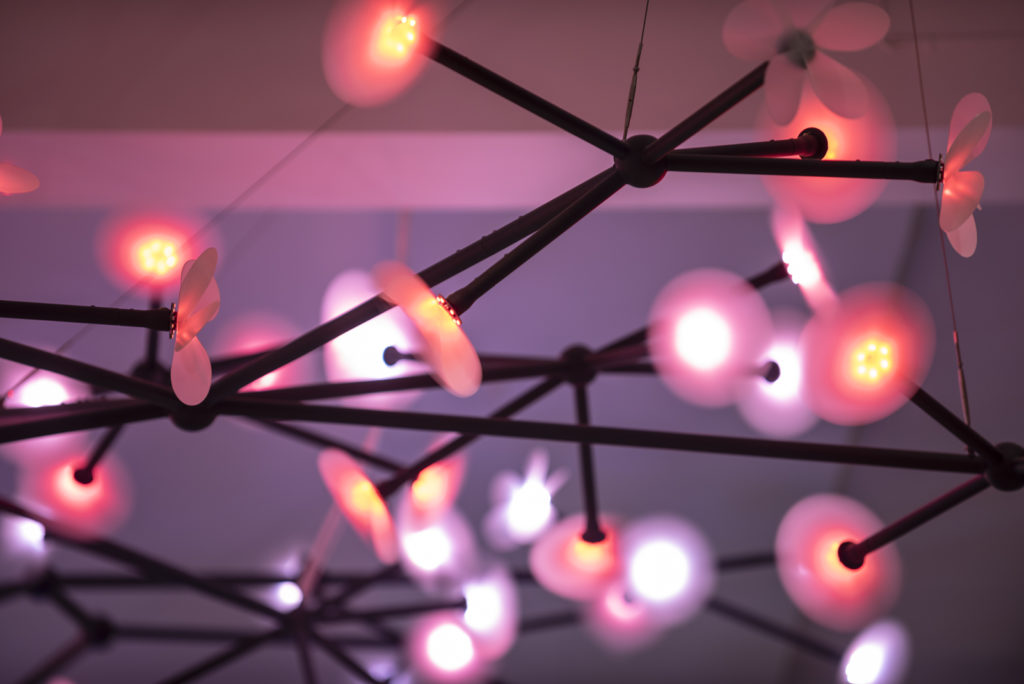
KB: Tell us about the process of making the piece.
SR: The process between us (Rolf and Sophie) is very analogue. We did a lot of modelmaking and a lot of drawing. Testing different types of designs, both of the propellers and the structure, in a variety of different materials and processes. We also tested many motors in combination with propellers in mock-ups which we hung from the ceiling of our studio and had running for months at a time to see how they would fare, in terms of sound, speed, lifespan and so on.
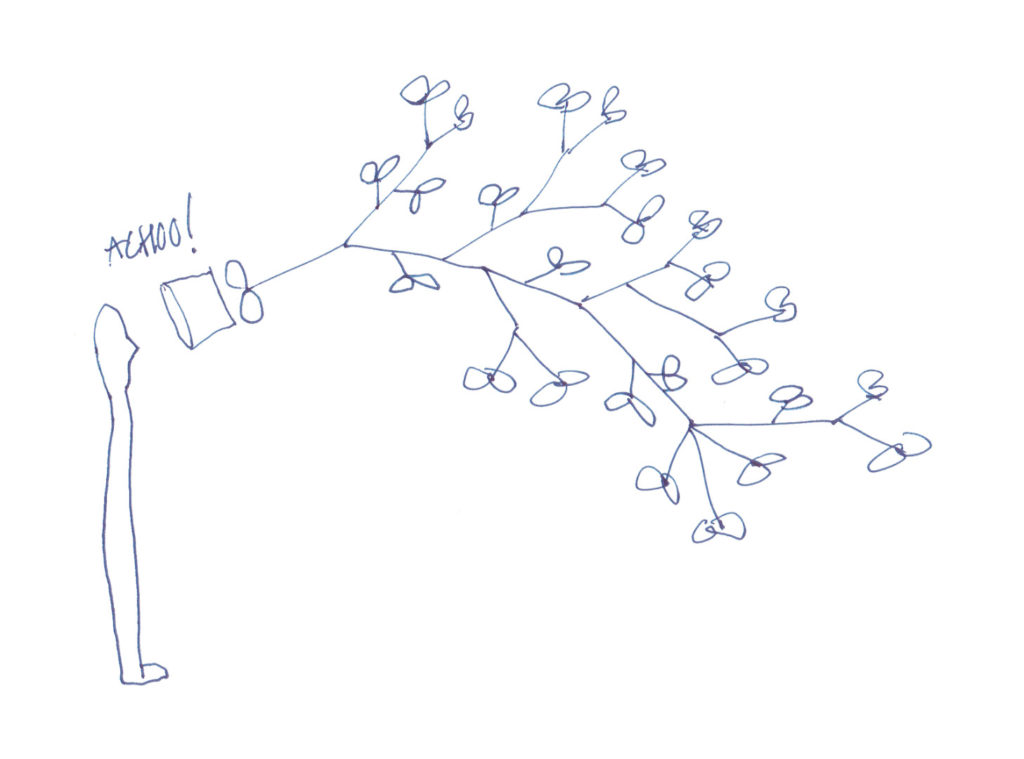
With ‘Bloom’, it is the first time we tried our hands at creating a kinetic piece and it is a decision we did not take lightly. One thing is creating a piece with movement, but to create a piece of this scale with hundreds of moving parts for a museum where we know it would be running for up to ten hours a day, non-stop, 365 days a year is something entirely different. So, we knew we needed to put together a special team of people to be part of delivering this project.
We created a small, tight team of five amazing people to work with, all experts in their respective fields. To carry out the programming side of the piece we had Adam Heslop from Pixel in Progress and Carlos Valente who also did the hardware specification. We had an intimate working relationship with Adam although we hardly ever sat in the same room because everything is digital. On the more hands-on side of things we worked with Mike Harrison from White Wing Logic, on the electronics design and fabrication. To fabricate and detail the structure we had James Shearer from Other Fabrications who also carried out the installation onsite. And finally, to make sure the piece would be safely attached to the ceiling of the Museum, we had Sanja Buncic from Entuitive engineers.
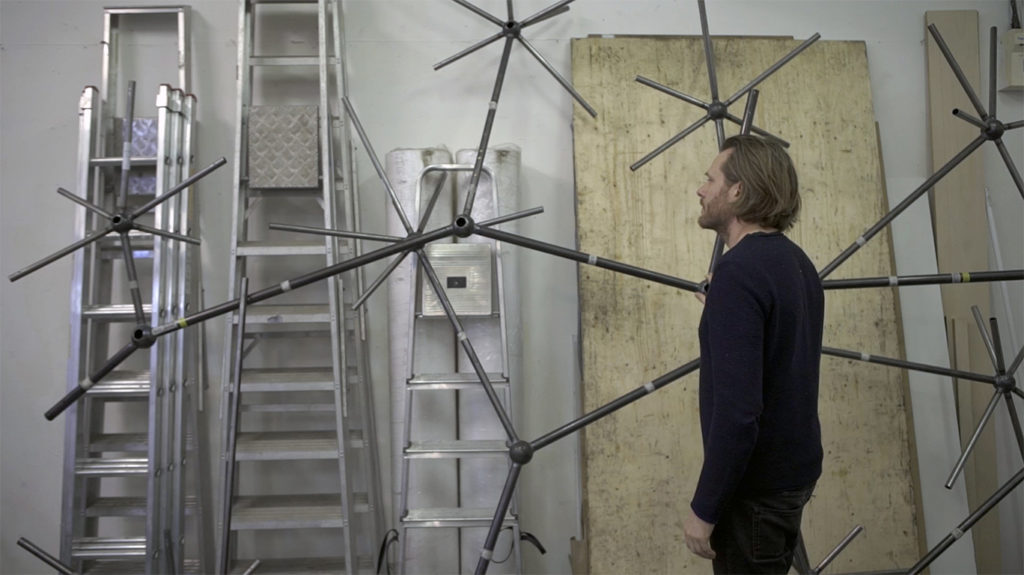
When creating a piece of this scale we never actually get to see it in its entirety until it is on site. So, for this piece we decided to use VR to be able to see and feel it in the actual space. This way we could see the piece in situ and walk around the Museum to get a sense of its visual presence from different locations, like from the ground floor galleries looking up or looking across from the opposite gallery. We could place ourselves underneath it to test different disease spread stories in the most realistic way. This enabled us to work closely with the architects on the project who also used VR in the designing of the space.
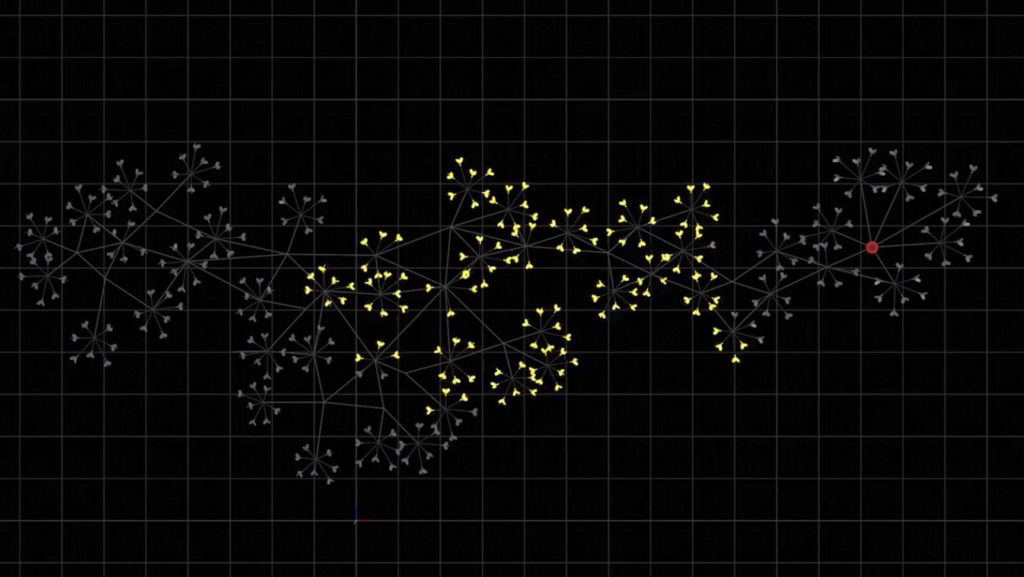
KB: How do you feel now that ‘Bloom’ is on display?
SR: Right now, it is odd to think of how very relevant the subject matter became so soon after completing the piece.
It was a great moment finally to see the piece in its entirety in the gallery and be able to sit under it and let the different ‘stories’ play out above our heads. No one will actually understand the piece from just looking at it, but with just one clue (the spread of a virus) one can easily start to spin up a story of what it is about.
We hope it has the right amount of presence and intrigue to spark curiosity for people to ask questions and dig deeper.
Eleanor Crook (born 1966)
https://dx.doi.org/10.15180/201404/005Eleanor Crook’s practice is founded in the intertwined histories of medicine and art. Starting in classics and philosophy, her subsequent artistic training saw her focus on anatomy, as well as historic methods and materials, such as wax modelling and lost wax bronze casting. Her work has developed from long-term collaborations with medical museums and historic anatomical wax collections, and she receives regular commissions to produce work for such contexts. Her work is richly detailed and steeped in materials, requiring the viewer to pay attention, and rewarding repeated close looking. Always figurative, her sculpture often plays between real and imagined subjects.
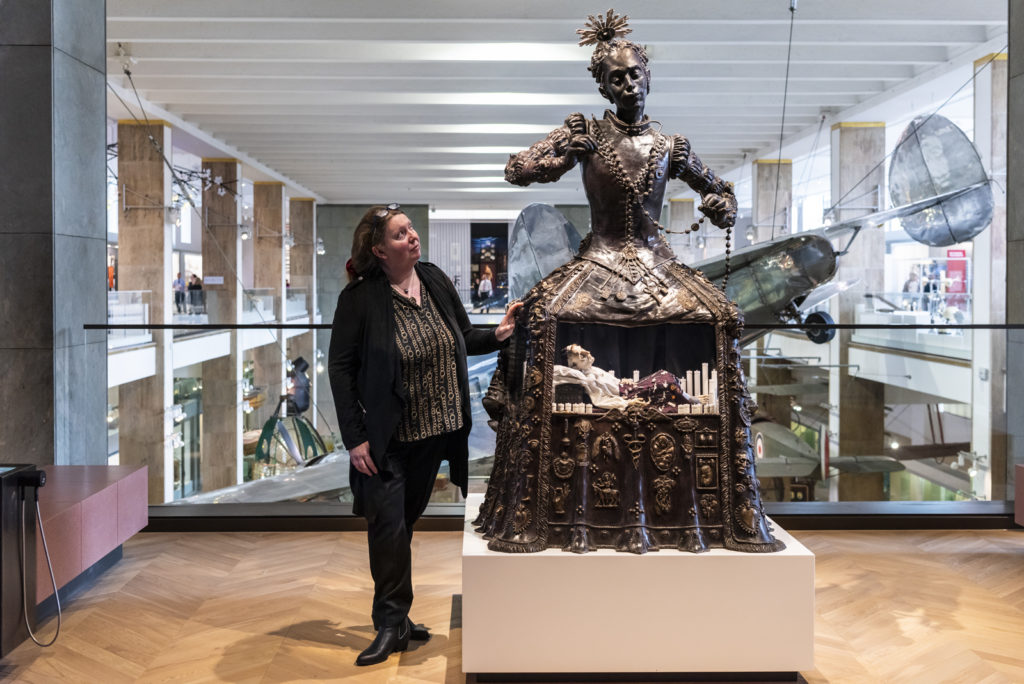
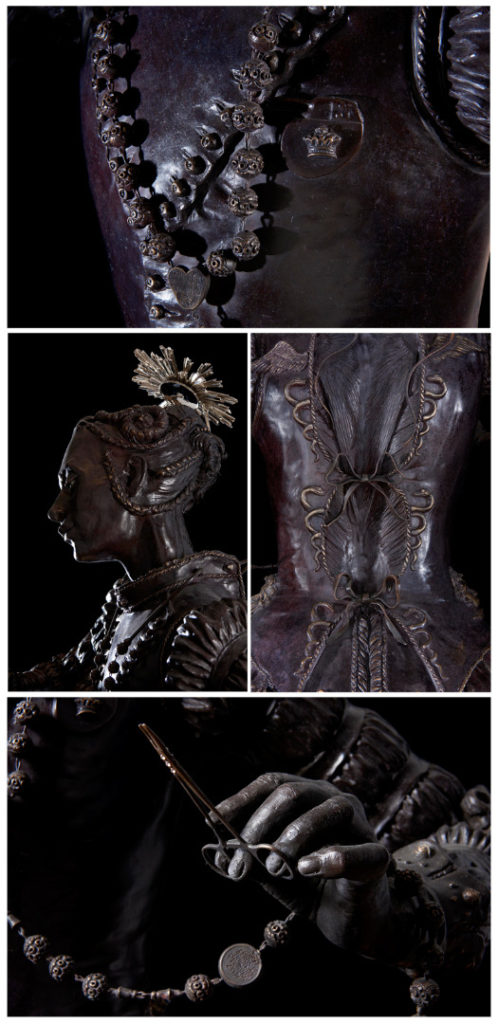
Katy Barrett: Tell us about your work and background.
Eleanor Crook: I’ve been a sculptor for many years, although I originally trained in classics and archaeology. Ancient Greek sculpture got me interested in the idea of the statue as an entity that you encounter.
When I went through art school it was almost forbidden to make a figure, so I ended up learning a lot about the body from museums, particularly medical museums. After a while, the curators of these museums started to notice what I was doing and asked me if I could make things that were missing from their collections. So, I fell into this interesting area somewhere between medical illustration and fine art. I have always had a slightly macabre turn of mind and have been very interested in what is it that leaves when we stop being alive.
I have an enormous interest in historical materials. A lot of the artists interested in sculpture and the body internationally focus on very modern materials – smart or biological materials, or ones that can be printed and designed via a computer – but the materials that speak to me are the older ones that have had a power since sculpture began, especially bronze and wax. I have always been interested in the ancient techniques of working metals, modelling, carving in wax: to me, a sense of re-inventing and rediscovering lost techniques is still science.
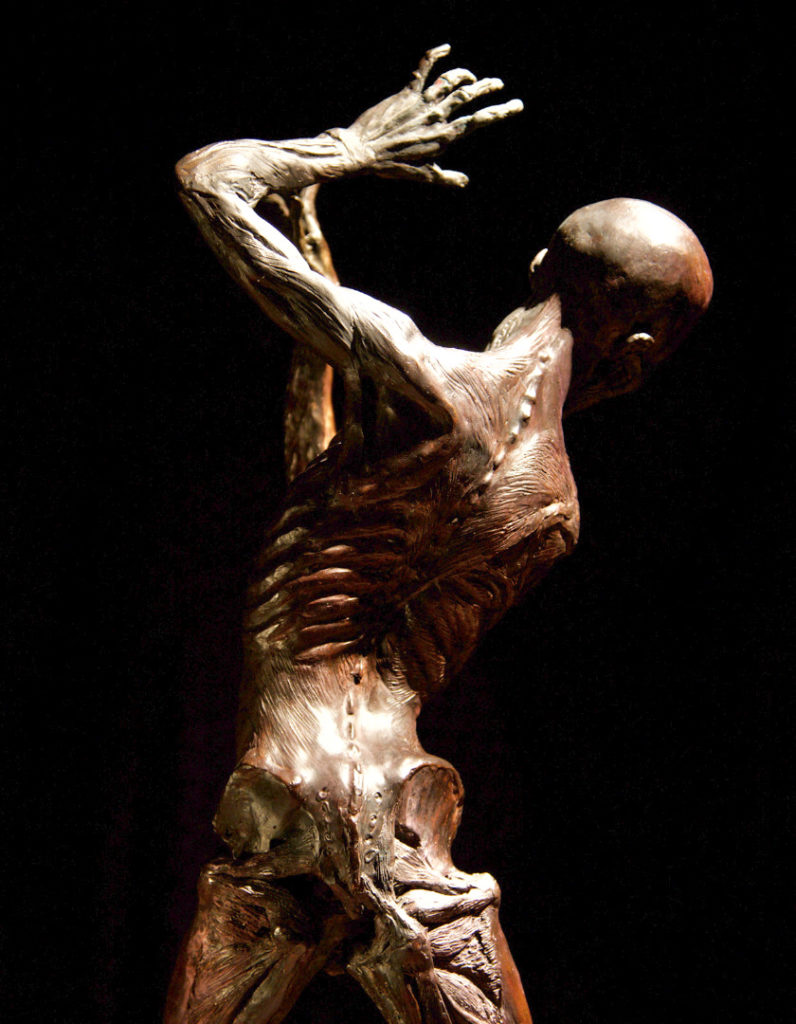
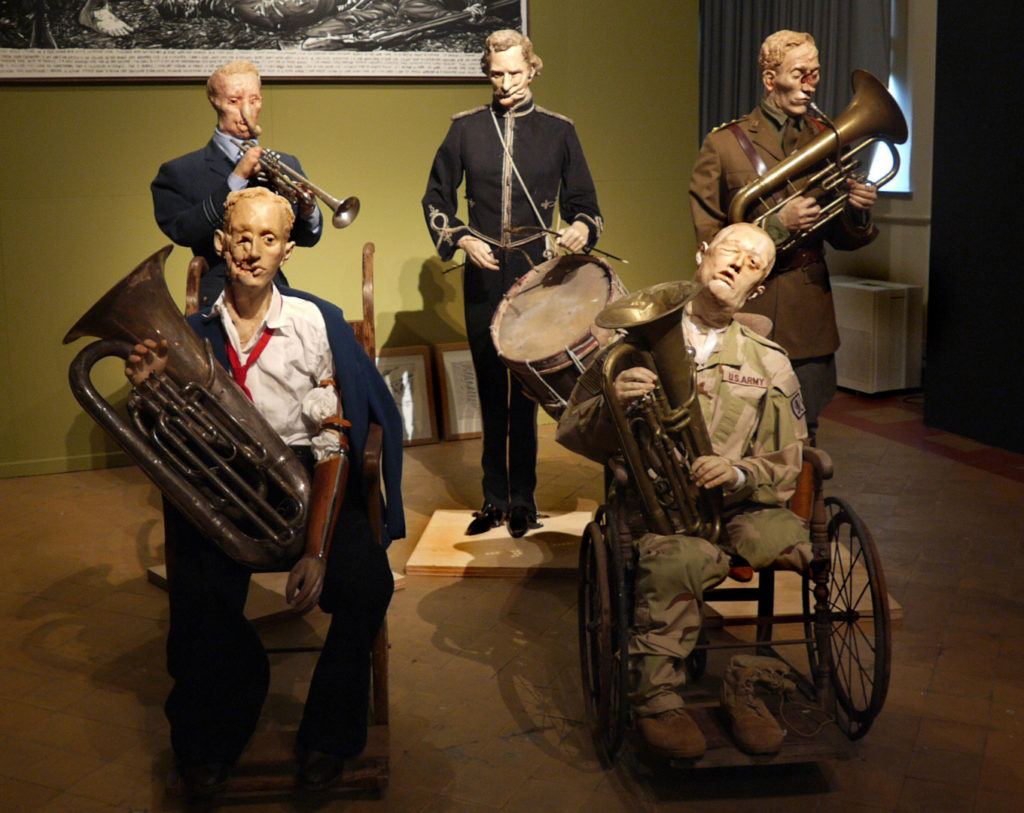
KB: What appealed to you about this Science Museum art commission?
EC: I remember receiving the email about the commission out of the blue and thinking that it was a very large job. The idea of making a piece to sit in a huge medical collection with cultural references speaking to the themes of life and death, mortality, medicine, the limits and possibilities of treatment, seemed so apt to all of my pre-occupations. The very public nature of the platform made me initially quite shy and I thought it was interesting to take these private thoughts about mortality and make them public, to see whether I could produce something that the public would feel as well.
On a practical level, the idea of being supported, funded and given the opportunity to produce something ambitious in real materials was tantalising. In a job like mine, you put in a lot of proposals that remain in your imagination because they never come through. I wish I could show the shelf of possible sculptures in my mind.
KB: Do you think it is a particular challenge to work with this medical context? Is that different to working with a scientific context more broadly?
EC:I think it is easier to connect with an audience on medical topics than it is on, say, physics or entomology. Everyone has a body and a lively or morbid interest in its vulnerabilities. I think it goes straight to people’s deep feelings as soon as you start talking about medicine. It provides a rich ground for making art, your audience will always take it personally, and will empathise.
Addressing this topic also feels like a responsibility. I feel very sensitive when I’m working with people in the medical profession with a very specialist range of knowledge, which is beyond anything that a layperson could know. It has to live up to something important and complicated. This is something that I noticed a while ago through some pieces of work I made that I felt were less successful. You can make a piece of work about something important but that doesn’t make the work important. In fact, if you make a piece of work about something important and you miss, it becomes a moral mistake as well as an aesthetic mistake.
KB: What informed your proposal for the commission?
EC: I visited the Science Museum and watched the audience. I wanted to get a feel for this very broad range of visitors to whom I was going to have to mediate the idea of ‘a good death’. My long-term interest in the one-to-one encounter that an individual can have with a single statue kept recurring. The idea for a secular saint or a patron saint of medicine dropped into my head, but also an idea for a sculpture on the subject of medicine: the patient. Slowly the two sculptures came together into the piece that is now installed in the gallery.
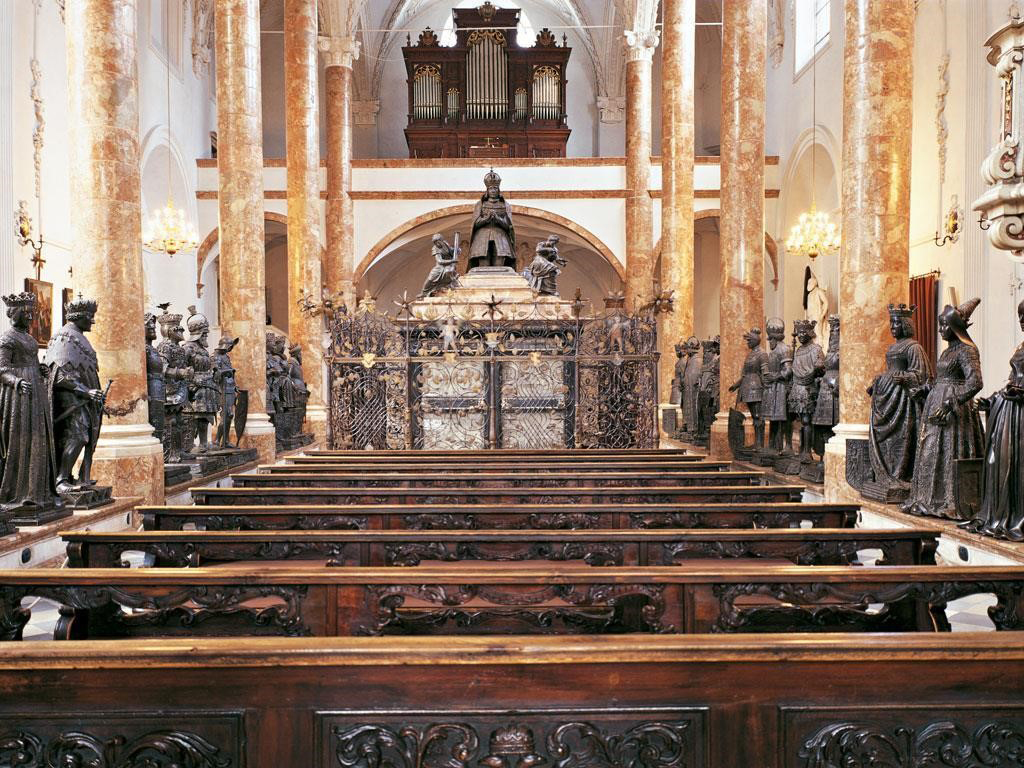
The thing that really informed the work was a very young childhood memory of a set of sculptures that introduced me to the idea of death. These are the bronze sculptures at the cenotaph of Maximilian I at the Hofkirche in Innsbruck. There are 28 tall, black-bronze spectacular kings and queens surrounding the empty tomb with extraordinary texture in their clothes, jewellery and armour. It was something of that still, highly decorative, sombre atmosphere that I wanted to imbue into this statue because it recalled to me this first presentiment of mortality that I had been given through a sculptural experience as a kid.
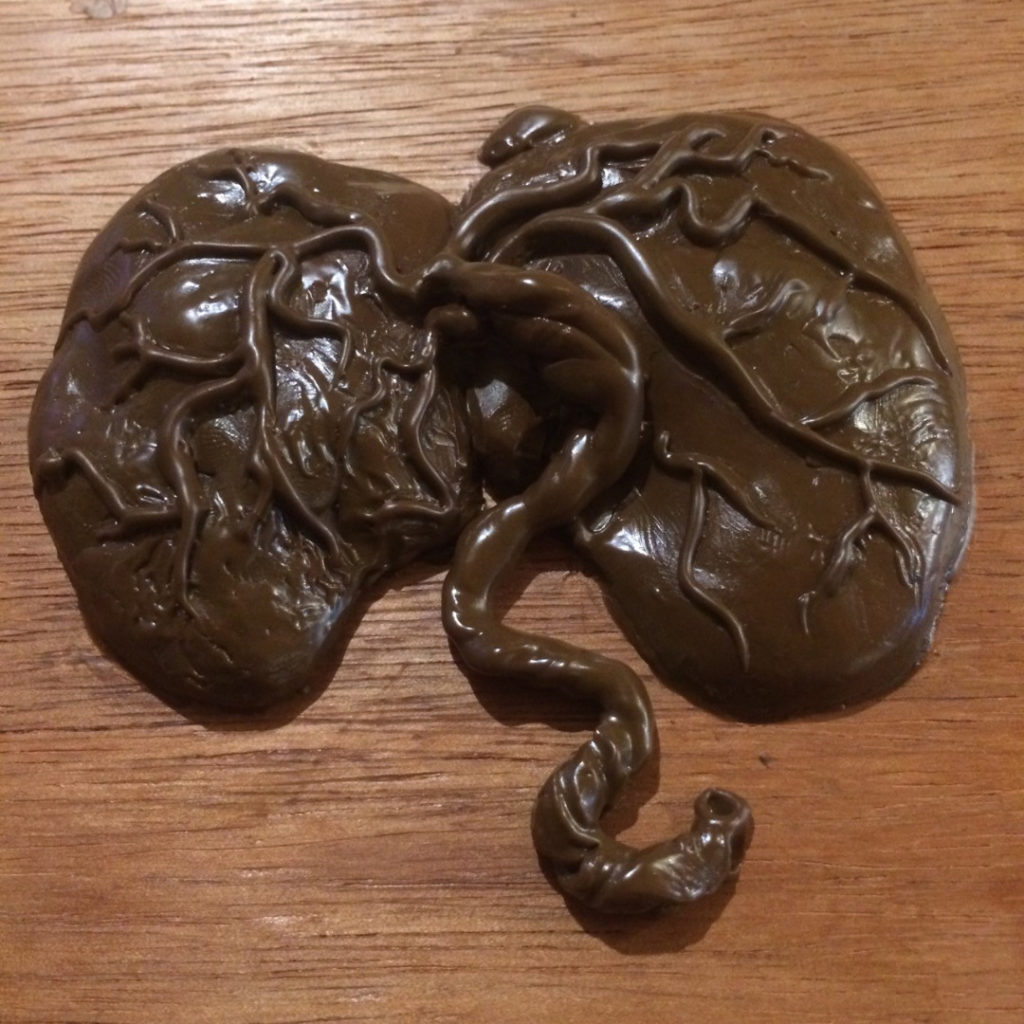
There is a long list of references in the sculpture. I always intended the hands to be the hands of a real person and they are cast from heart surgeon Francis Wells. I also wanted the Science Museum team to have a part in the sculpture’s development, so I asked everybody to suggest a religious emblem to go onto the dress. I had an interest in votives from Catholic shrines and thought that would be an interesting texture to apply to the garment of this patron saint. I think it became a fundamental part of the piece, and it pushed me to sculpt things I would not have thought of on my own.
KB: Can you tell us more about the process of making the piece?
EC:It started as an ink drawing, then I was asked to deliver a maquette. I made ‘Santa Medicina’ about 14 inches tall in wax. I knew that I wanted a glass case in her skirt, so the first maquette contained a Ferrero Rocher box. A second maquette had about forty per cent of the final detail and required a lot of mathematical modelling to generate the shape of the skirt. I knew that it was important that people could sit on benches at the side of the sculpture, so the skirt needed side windows as well so that visitors could see from both sides.
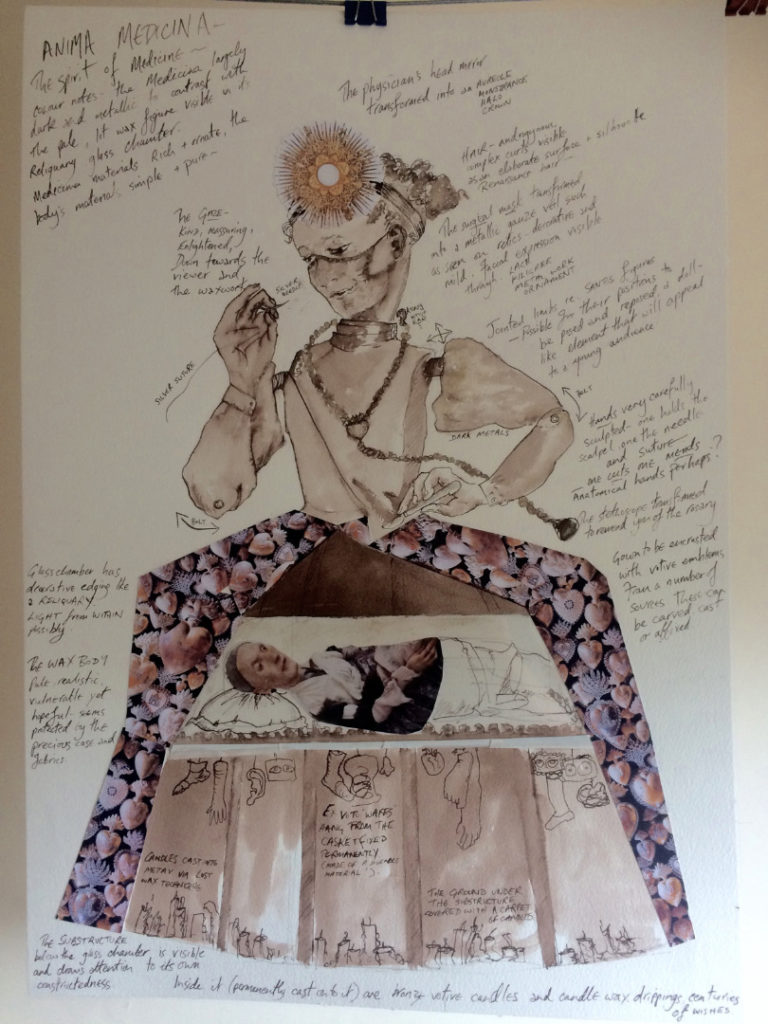
I worked with Sculpture Castings Ltd of Basingstoke who did a beautiful job and are very local to me. I took the wooden maquette to them to scale up and they built a metal armature. Back in my studio, I clad that in plastic and chicken wire, and sculpted over it in clay, which took a long time. I worked with drapery to think through the folds of the skirt and had a real surgeon’s gown on a shop window dummy for the sleeves. A lot of it is a rather enjoyable play with medical imagery, for example turning the stethoscope into a rosary and the surgeon’s mirror into a halo.
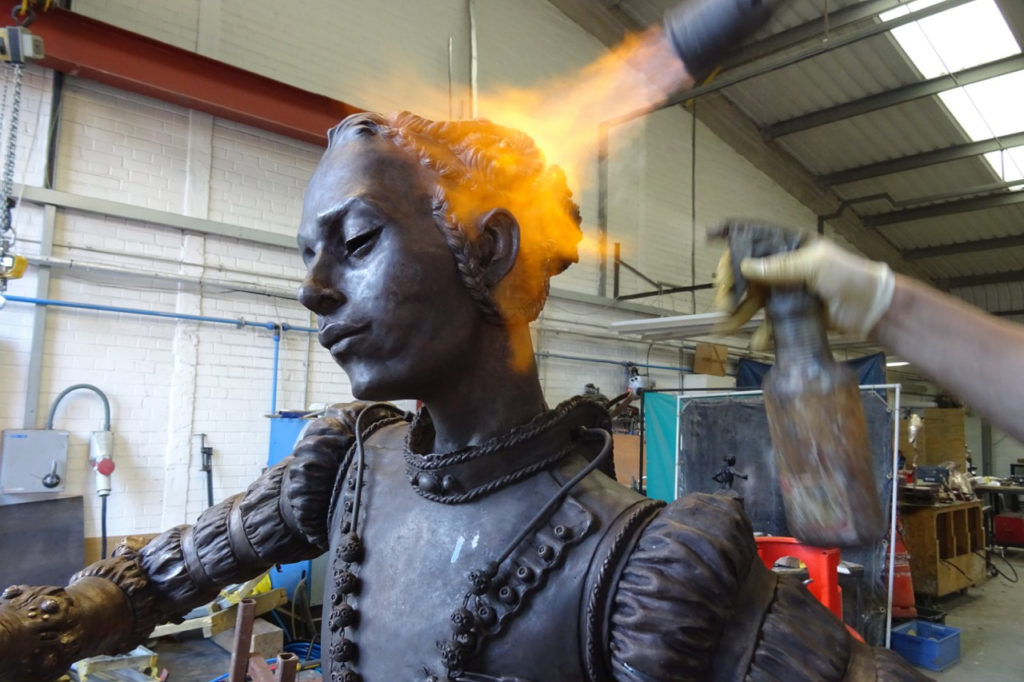
Once ‘Santa Medicina’ was sculpted in clay, Sculpture Castings Ltd produced a huge pink rubber mould in about fifteen pieces with beautiful registration of all the details. Then it was sent to the foundry where they turned it into a green wax positive mould, so that you can see and correct all the blemishes. I still had lots of detailing to apply, so spent the next two months at the foundry applying wax details to the skirt. Next the foundry cut the wax pieces up, cast them into bronze, and welded it back to form one piece. Then the hard work really started: to finish the metal. Every weld shows, bits of detail get lost in the casting, and much more work than I think anybody would realise has to take place to manage this. The patina comes last. The foundry had not produced my signature aubergine colour before, so we had to get some recipes and experiment. Then the emblems were polished back by hand. The eyes are hand-blown human-grade prosthetic eyes, which went in very late in the process. I was reminded that the sculptors in Ancient Egypt used to have an opening of the eye ceremony where they painted the eyes on the statue, and that is when the spirit of the god was said to enter.
The wax figure in the case was more familiar territory. I have made my name making these rather vulnerable-looking wax figures of people who seem to be just on the threshold between life and death. Compared to the bronze, which is hugely complicated and labour intensive, making a wax model returns to the first principles of sculpture. You take this very biddable material in your hands, start with nothing, and with a little bit of patience and imagination, you coalesce a human being out of the ether. It is an interesting challenge to see how many emotions you can chase across one particular sculpture of a human face. The bedding in the case is a death-bed pillow that I found in a market in Germany, with ‘God be with you’ stitched onto the fabric, which would have been used in an open casket. I had also been hoarding and collecting little medical badges to put on the figure’s cover.
The candles are a visual reference to the fiestas in Catholic countries where statues are walked around the city. They were one of the most difficult things to make because I wanted them in beautifully turned wood or wax, but those are not reliable. We eventually decided to design them on a computer and get them 3D printed, so I broke my own habit. UFO Fibre Optics helped us with the lighting and hopefully people will read the candles as a symbol of hope – being fibre optic, they are inextinguishable.
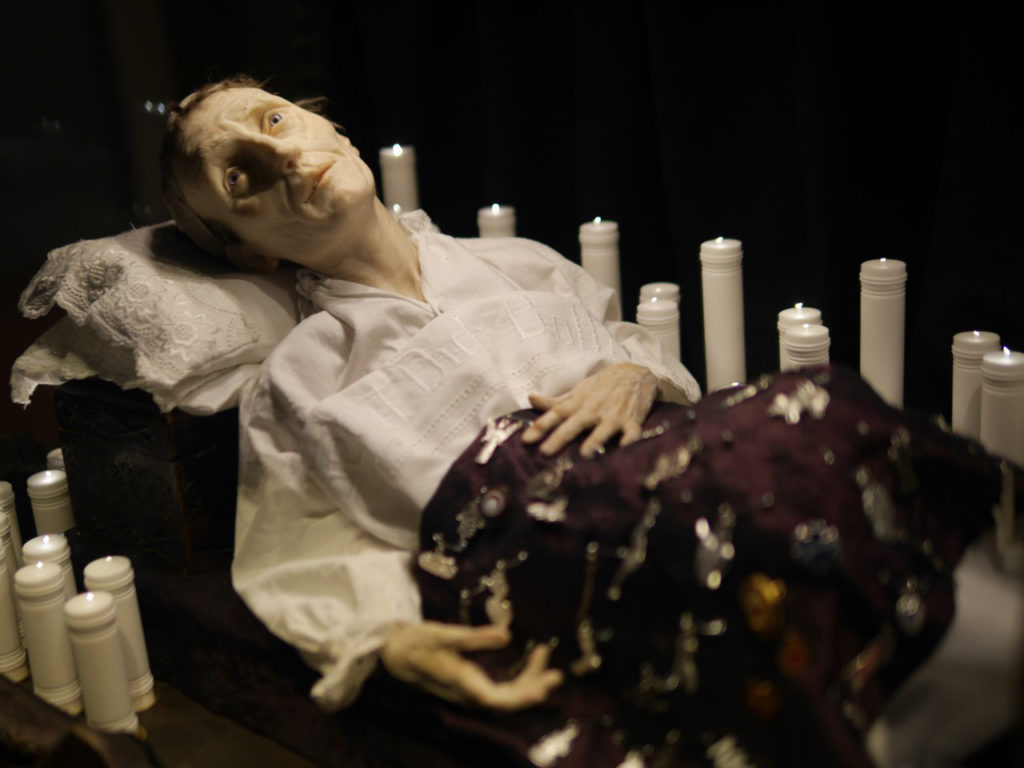
KB: How do you feel now that ‘Santa Medicina’ is on display?
EC: It is such an honour to have it on display with such a collection and such a public place. It is also so permanent. It is more public than anything I have made before. I do also feel as though I have left a part of myself in central London. I feel enormously attached to it and I am happy that the public have responded so generously.
I really hope, most of all, that the sculpture fulfils its purpose. That people look at it and it makes them feel better about medicine, about the process of being treated, operated on and looked after. This Corona virus pandemic has given it another set of readings that none of us could have expected – a sense of uncertainty about survival and fragility of the body, probably felt more strongly in our culture now than for a very long time.
I go back to my original intention: that it is meant both to be comforting and to allow you to feel the dreadful majesty of death.
Marc Quinn (born 1964)
https://dx.doi.org/10.15180/201404/006Marc Quinn is best known for his artworks that question our ideas of identity and the human body: his Self series of self-portraits – cast from pints of his blood every five years since 1991 – or his ‘Alison Lapper Pregnant’ commission for the Fourth Plinth in London’s Trafalgar Square in 2005. His practice responds to contemporary social history, art historical references, and questions of being human. Quinn’s interest in society leads him to make work about people, creating works of both unknown and recognisable individuals, including Kate Moss and Black Lives Matter protestor Jen Reid. He often plays between art and science and has worked with many public spaces and cultural institutions.
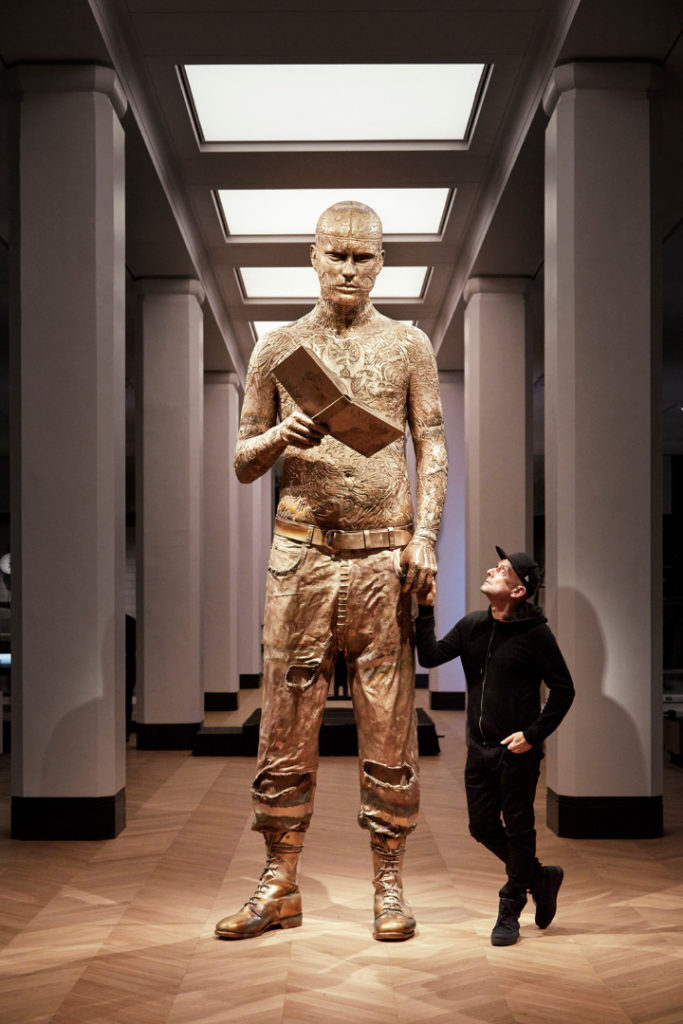
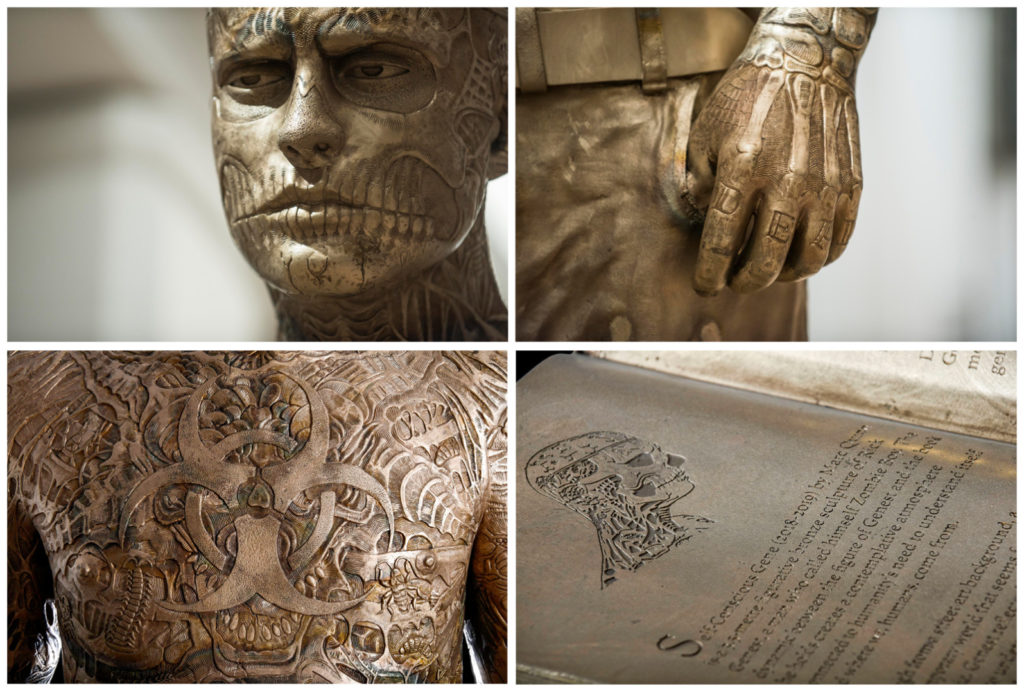
Katy Barrett: Tell us about your work and background.
Mark Quinn: I make art about what it is to be a person living in our world, creating portraits about humanity. My sculptures, paintings and drawings explore the relationships between art and science, man and nature, the human body, and the perception of beauty. I look to connect with art history in a meaningful way, from modern masters right back to antiquity.
A lot of my work is about the human body, the dialogue between the internal and external. These ideas came together in my commission for the Science Museum ‘Self-Conscious Gene’, or ‘Zombie Boy’, as it’s sometimes known.
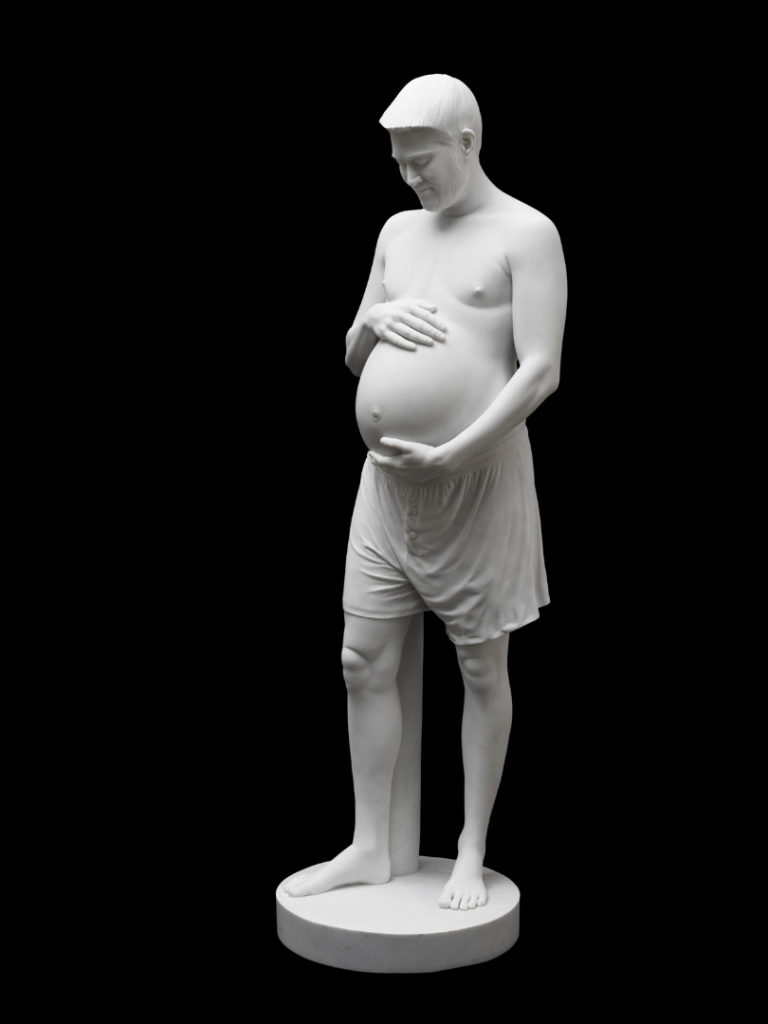
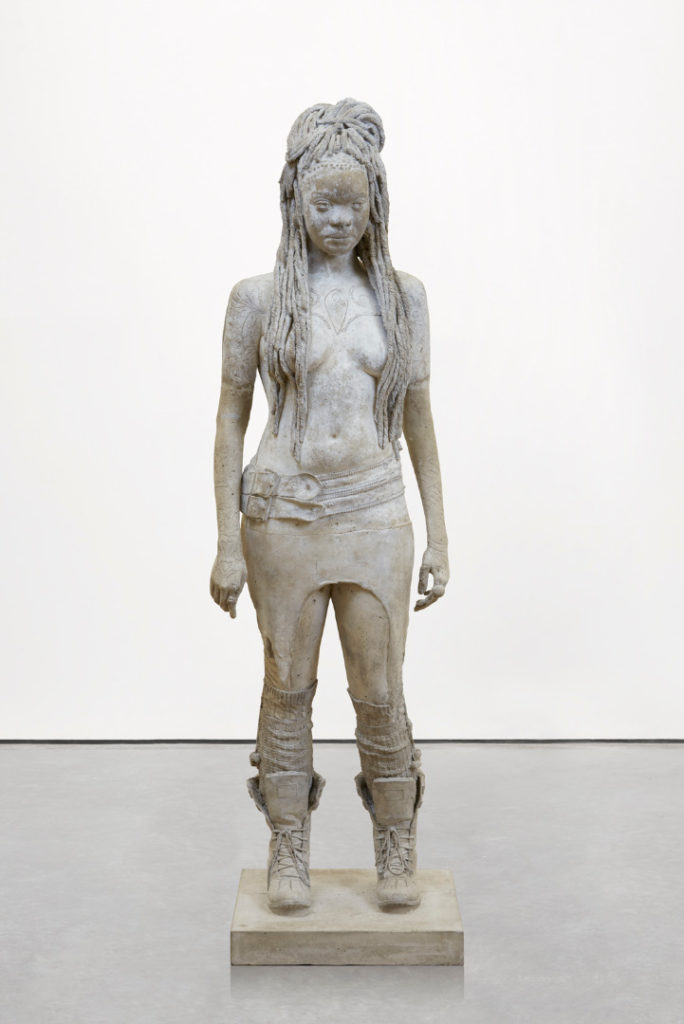
KB: What appealed to you about this Science Museum art commission?
MQ: Many things. I love the Science Museum; it was one of the first museums I went to as a child and continues to be a place filled with knowledge, art and wonder. I’m a huge admirer of Wellcome Collection and to have the opportunity to create a permanent sculpture for the Medicines and Bodies gallery was a dream come true.
It is exciting to me that children will get to encounter ‘Self-Conscious Gene’ and that it may become one of their formative memories. Many of the experiences that I had as a child at the Science Museum have stayed with me.
KB: Do you think it is a particular challenge to work with this medical context? Is that different to working with a scientific context more broadly?
MQ: In my practice generally, I don’t really aim to differentiate between medicine and science. Rather, my work is about what it means to be human. A key difference I see in my work is that science and medicine are looking for answers while art is asking questions for their own sake.
KB: What informed your proposal for the commission?
MQ: ‘Self-Conscious Gene’ depicts Rick Genest, popularly known as ‘Zombie Boy’, who began covering his body with tattoos of his complete skeleton following a period of illness. Literalising a quest to understand his own body, his tattoos are a kind of poetry. His ritual mirrors the human quest to understand and fix ourselves through medicine.
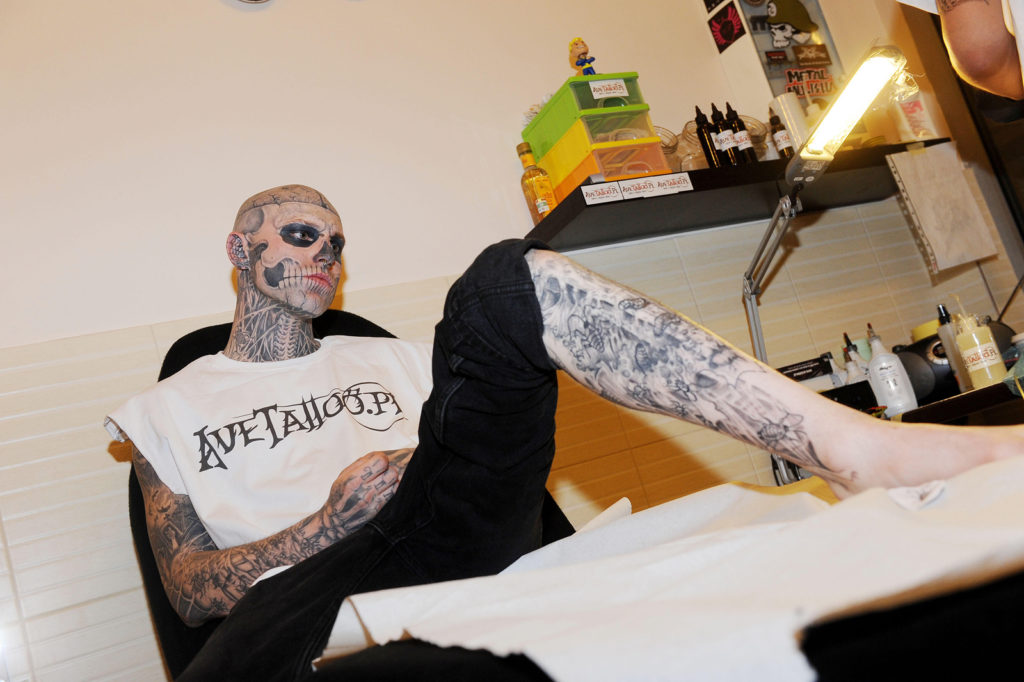
Working with Rick felt like an intersection between the contemporary world, pop culture and an anatomical model. It seemed that these connections would be perfect as a basis for an artwork at the Science Museum. I had already worked with Rick on a smaller life-sized sculpture but had always felt that the sculpture should exist at a colossal scale. At 3.5m (11’6”) tall, the sculpture towers over the audiences it welcomes to the Museum’s medicine galleries.
The sculpture evolved from my Body Alteration series (2008 to present), which explores how, using modern medicine and technology, people have modified their outer bodies to reflect their identity.
Through this sculpture I wanted to explore the deep desire held by humans to understand their bodies and personal histories. In this work Rick holds an encyclopaedia of anatomy, and the tension between the book and the figure creates an almost contemplative atmosphere.
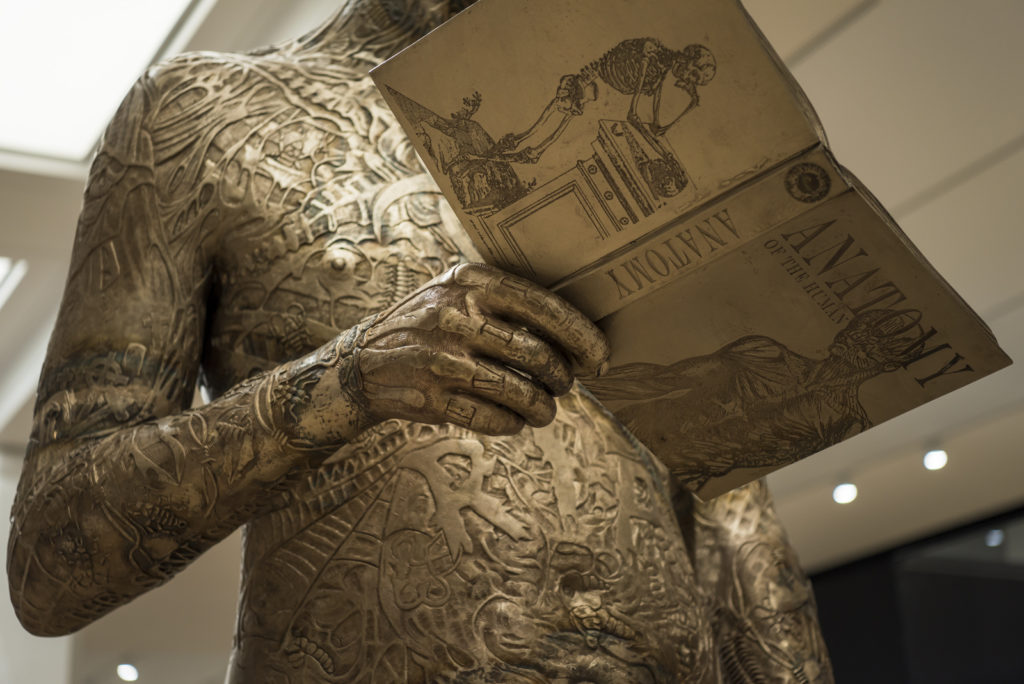
KB:Tell us about the process of making the piece.
MQ: When I first met Rick, I and my team took hundreds of pictures of him and lots of measurements. From those we had a clay sculpture made and then spent months carving his tattoos into the clay. Then we made a mould of the clay sculpture and put Rick’s trousers and shoes onto the sculpture and remoulded the whole thing. This was the creation of the life-sized sculpture of Rick. Making the much larger ‘Self-Conscious Gene’ took a year.
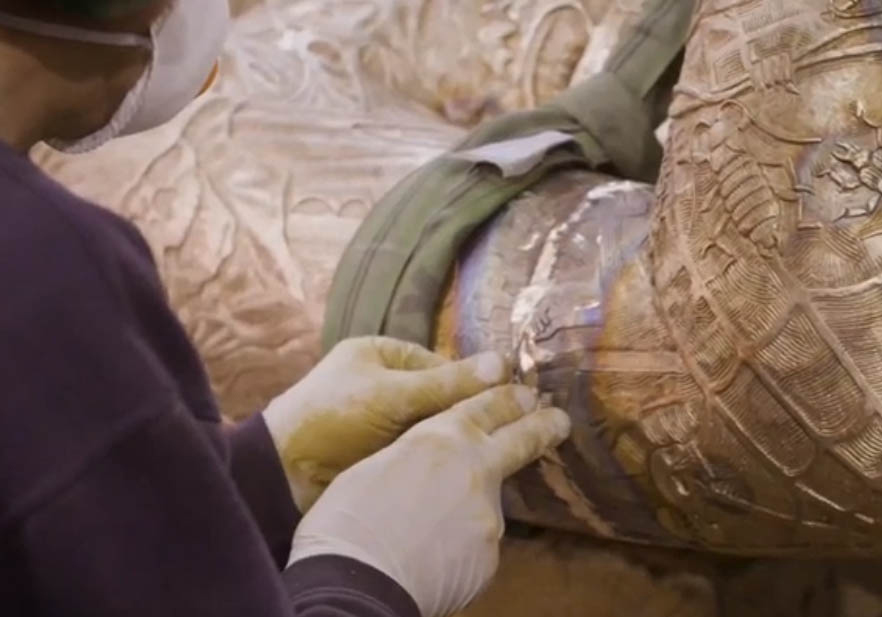
To make ‘Self-Conscious Gene’ stand at 3.5m, we had to enlarge every part individually. Through this process we ended up with a fibreglass version of the sculpture, which went to the bronze foundry where new moulds were created. From those moulds a wax sculpture was made and cut into many different sections. Each section was placed in a block of ceramic and put in an oven, allowing the wax to melt out and leave a hole the same shape as that section of artwork. Bronze was poured into those holes and the ceramic taken off, resulting in hundreds of separate metal parts. Those parts were then welded together around the steel structure. Normally in a sculpture you would clean the connections and get rid of any marks of welding, but I decided against that for ‘Self-Conscious Gene’. The purpose of this sculpture is to reflect how Rick was constantly culturally redesigning his biological body, so the sculpture itself should always look in a state of progression, not fully finished.
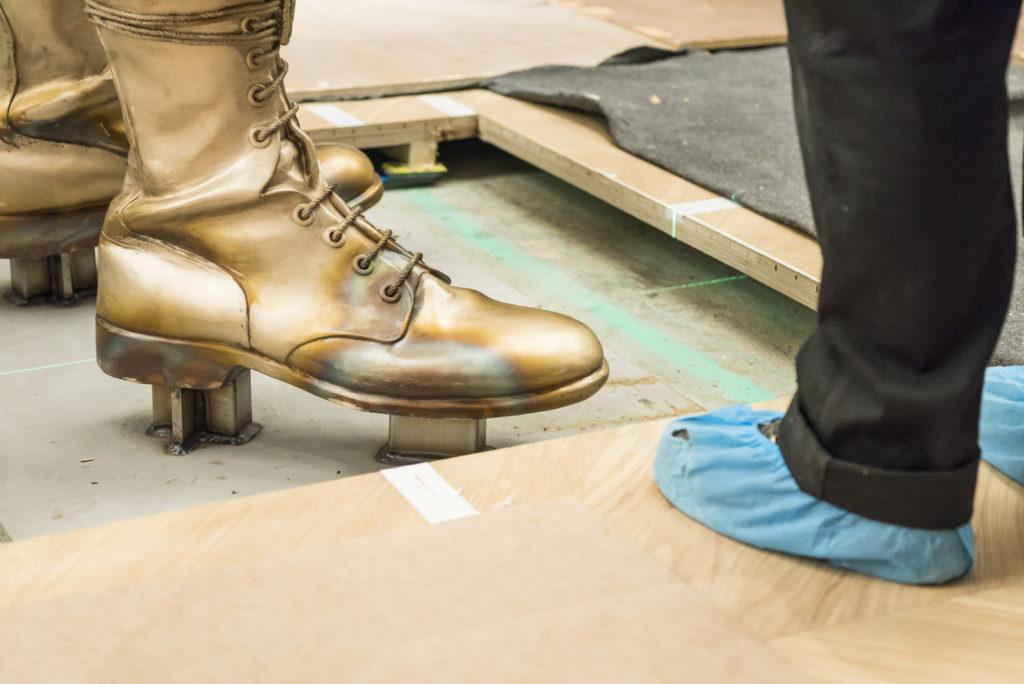
There is a lot of consideration needed when you are enlarging something to this scale. I made Rick’s head bigger so when the artwork is viewed from below it still appears in proportion. Then, of course, there is a lot of additional engineering required to support the sculpture’s scale; in this instance we created a big metal structure that goes up through the legs. The positioning of ‘Self-Conscious Gene’ in the gallery is brilliant as it is right in the middle of the floor where visitors can touch the sculpture. This may well change the patina over time, but it is really important to me that there is meaningful interaction between the public and the artwork.
KB: How do you feel now that ‘Self-Conscious Gene’ is on display?
MQ: Very proud and excited about it, but I haven’t seen it for a while due to the lockdown. I’m looking forward to visiting when the Science Museum reopens.
It is also very emotive. Having first sat for me in 2010, Rick sadly passed away in 2018, the same year that ‘Self-Conscious Gene’ was created. The sculpture now has a dual purpose, serving as a monument to a unique individual who inspired a generation. He is an icon.
Curatorial afterword
https://dx.doi.org/10.15180/201404/007As I joined the Museum during the process of commissioning for Medicine: The Wellcome Galleries, contributing to the development of these works by Crook, Davey, Quinn and Studio Roso has been formative to my thinking about what art should mean for the Science Museum. The question I was perhaps most interested to hear the artists answer was whether they think it is a particular challenge to work with this medical context, and if that is different to working with a scientific context more broadly. Crook answered that it is a ‘responsibility’ to work with medical areas of expertise while also providing a ‘rich ground’, Studio Roso that they did not want to ‘make our audience uncomfortable, but instead spark their curiosity’ and Quinn that ‘my work is about what it means to be human’. These ideas of responsibility, (un)comfort, curiosity and humanity perhaps do mark medicine out as different, connected as it is so strongly to the human body that we each experience. Yet, these ideas also serve to remind us that wider science sits within culture and how we experience it. For me, it is crucial that such artworks contribute to making visible the historical dialogues embedded in what the Museum has collected, as well as how and why. Art helps to prompt discussions about how knowledge and museum objects sit within networks of societal understanding, with society shaping science as much as the creative arts. By unpicking the structures and image systems that give these artworks their richness, I hope that visitors will be empowered to question the structures and prejudices that similarly lie behind the medical word or image.

